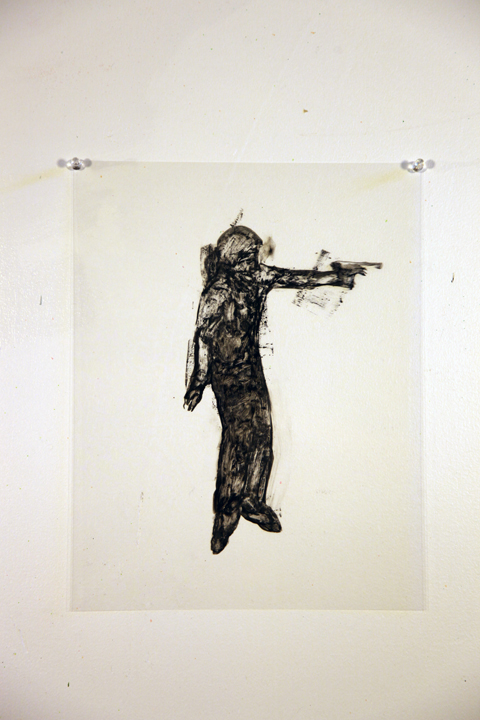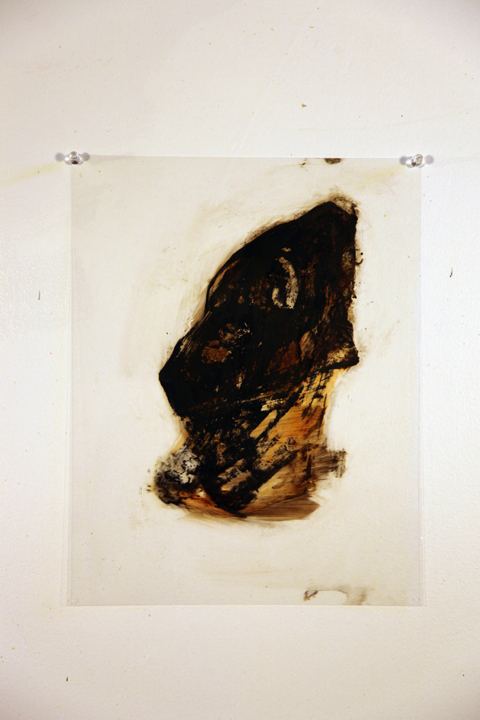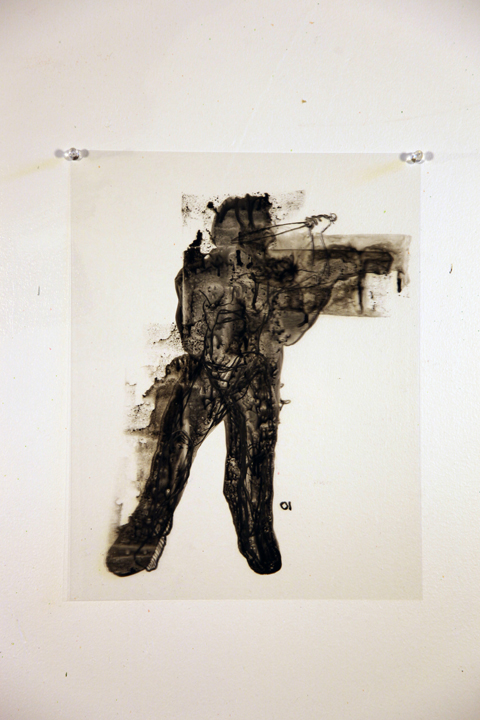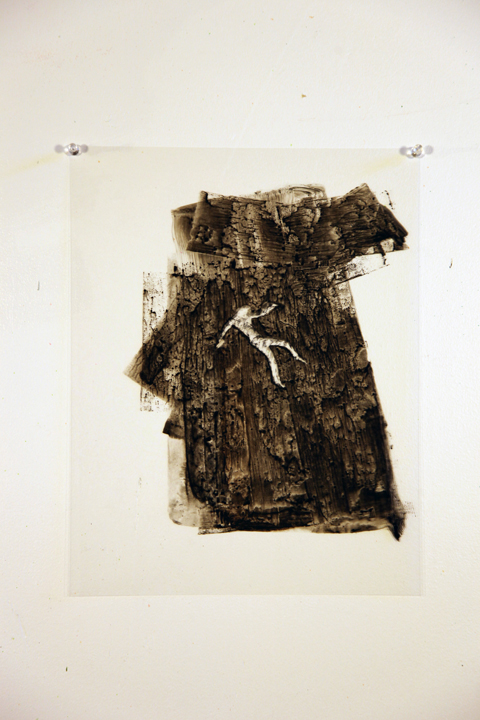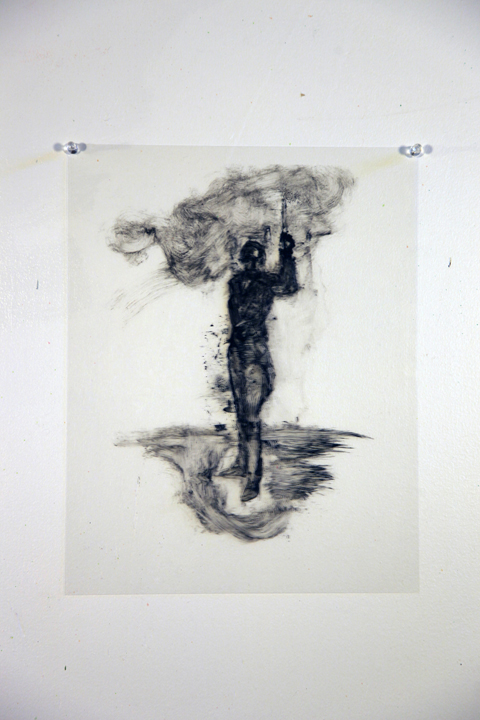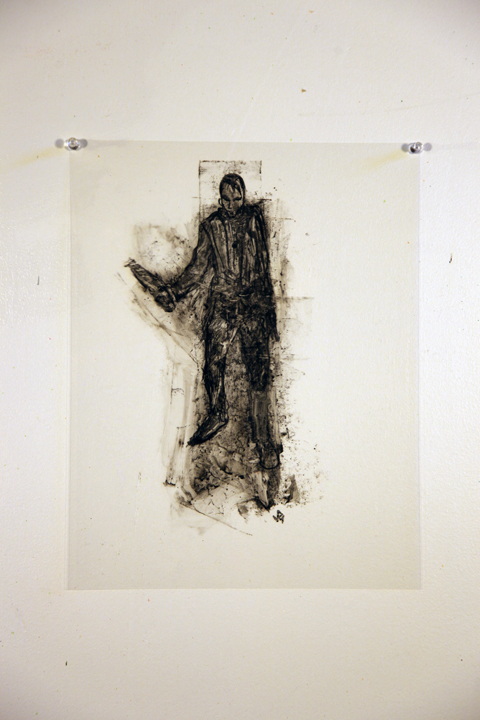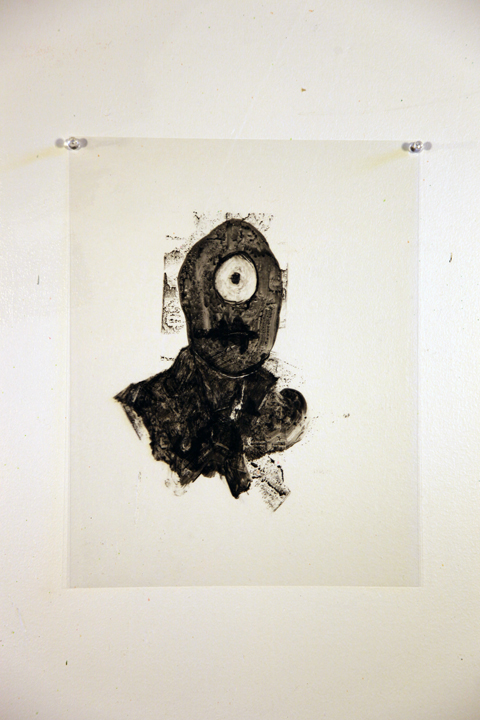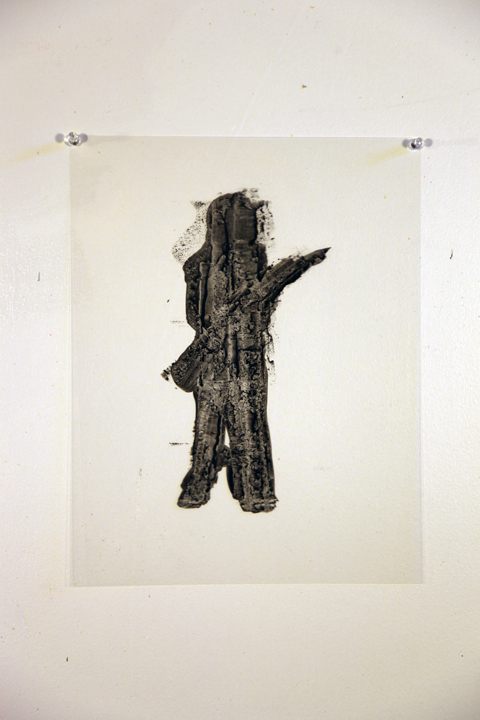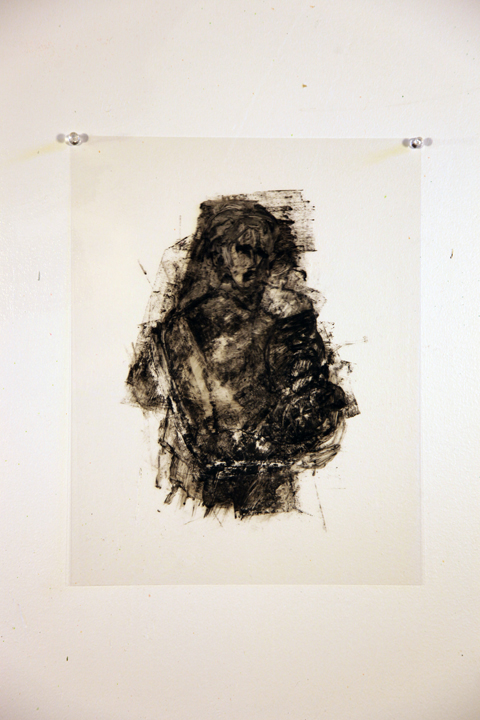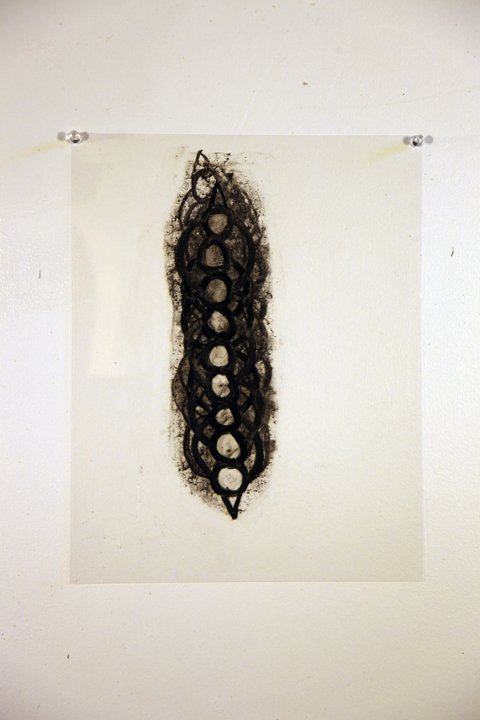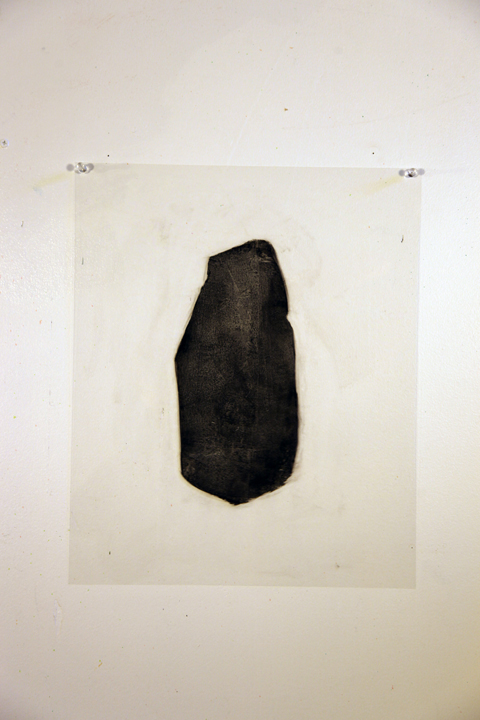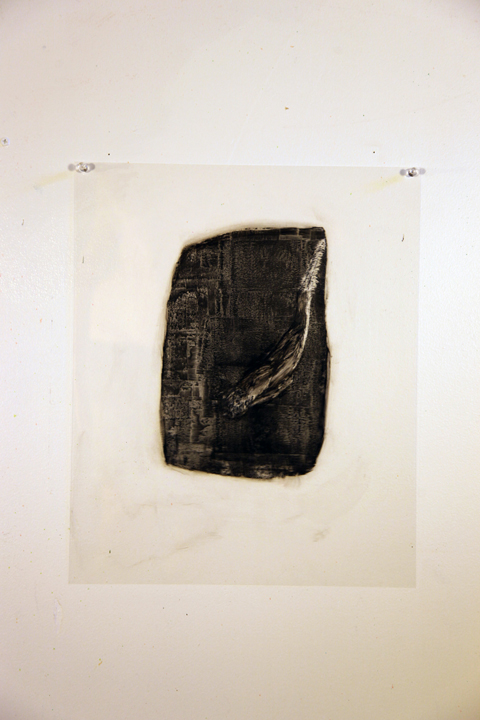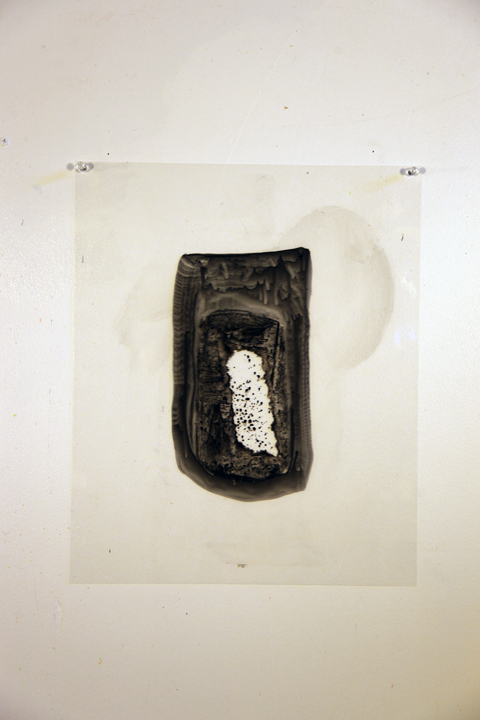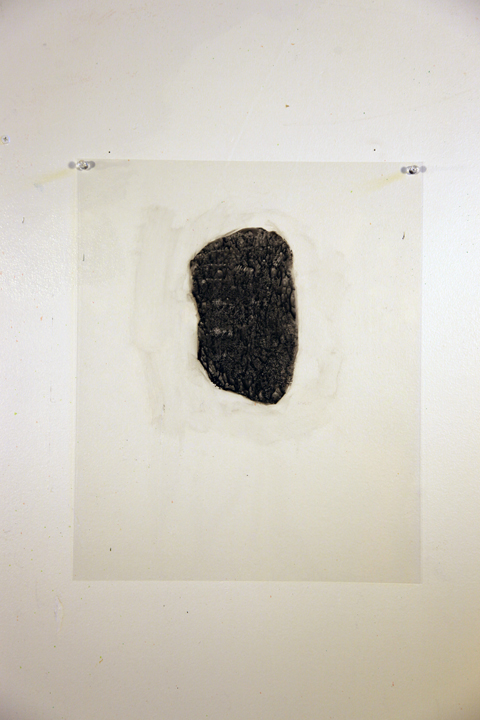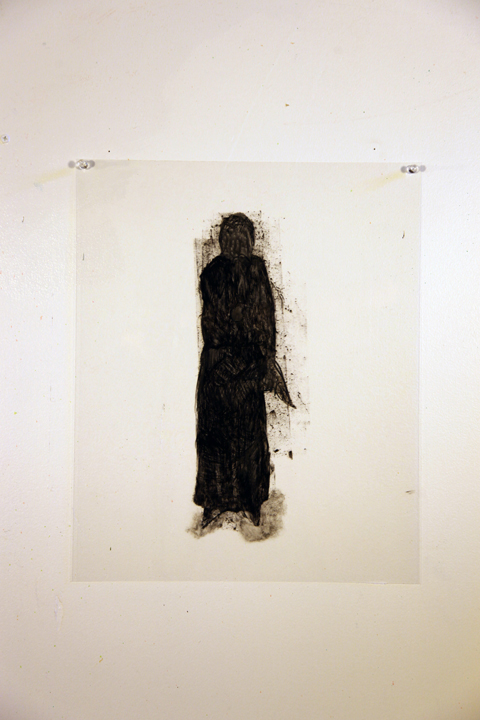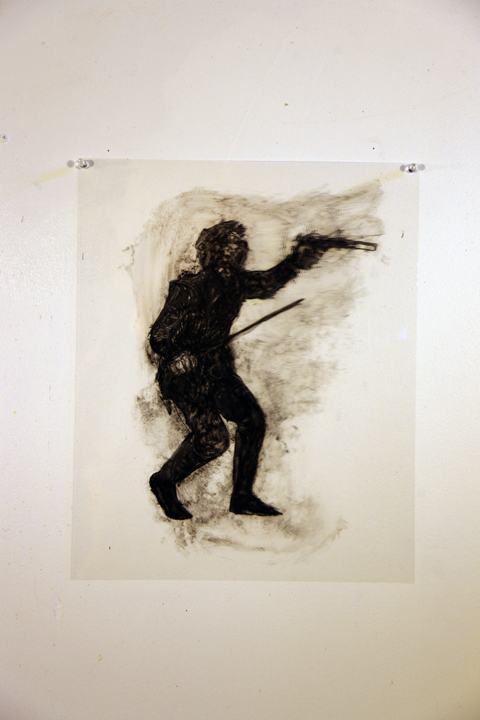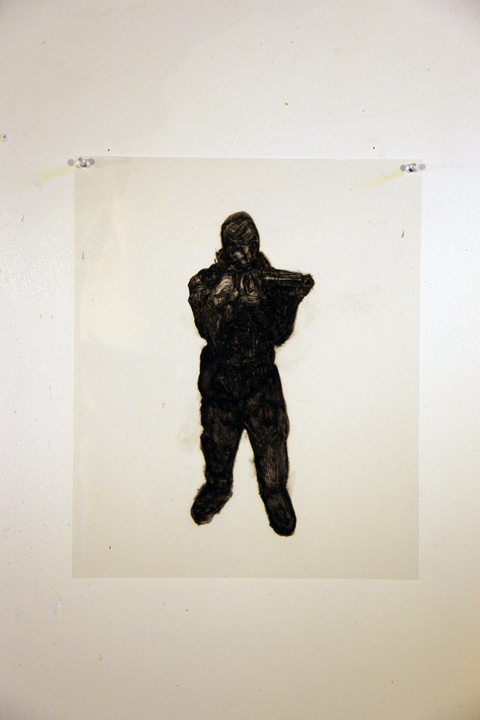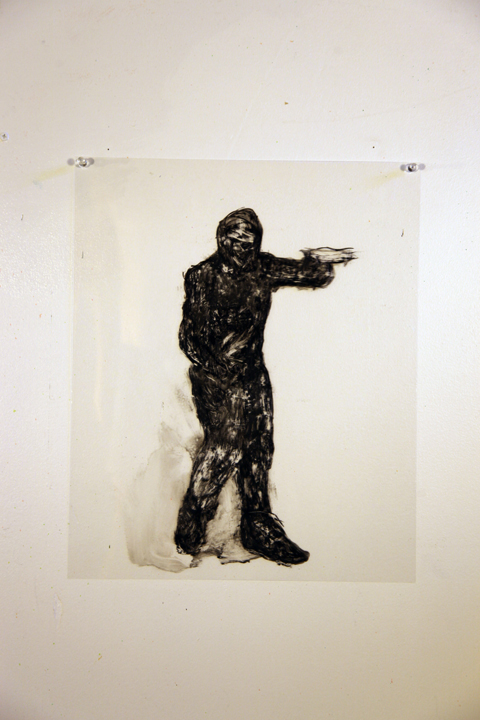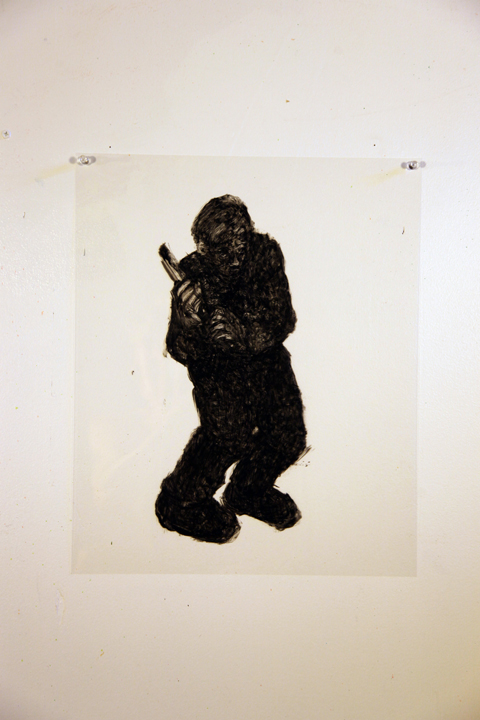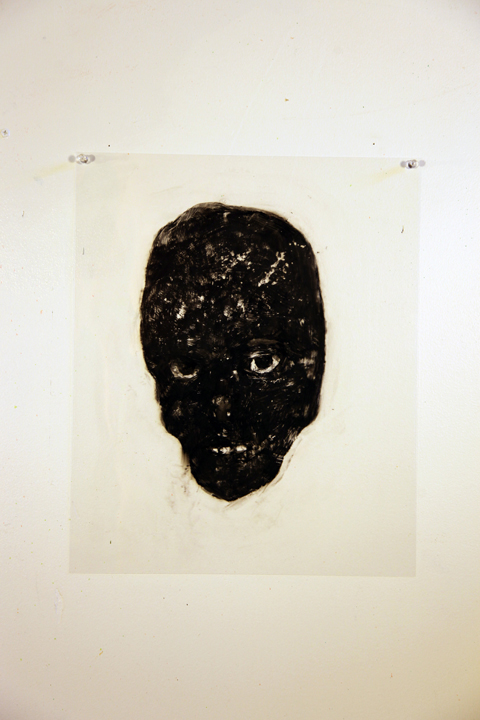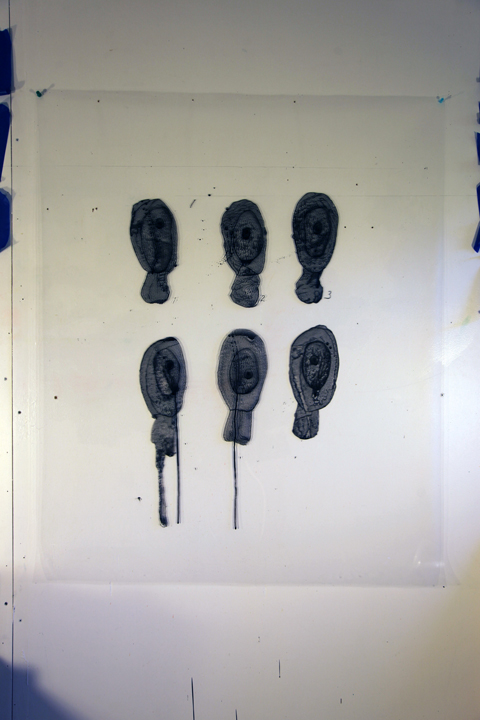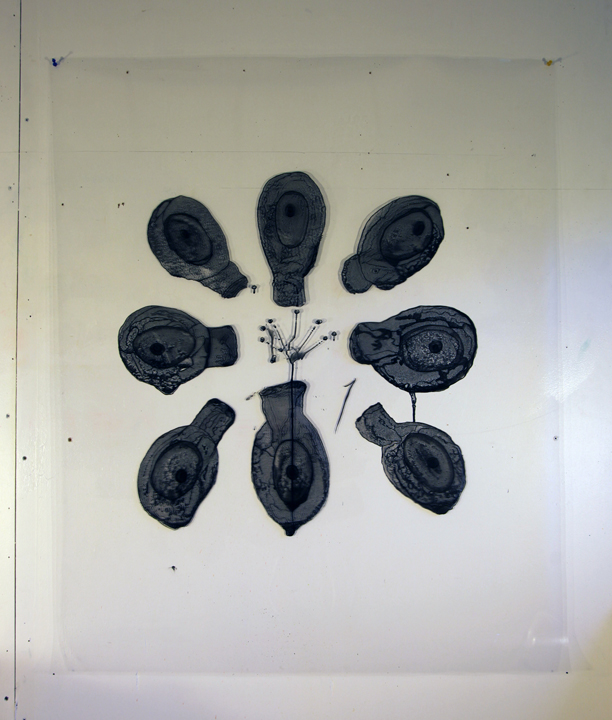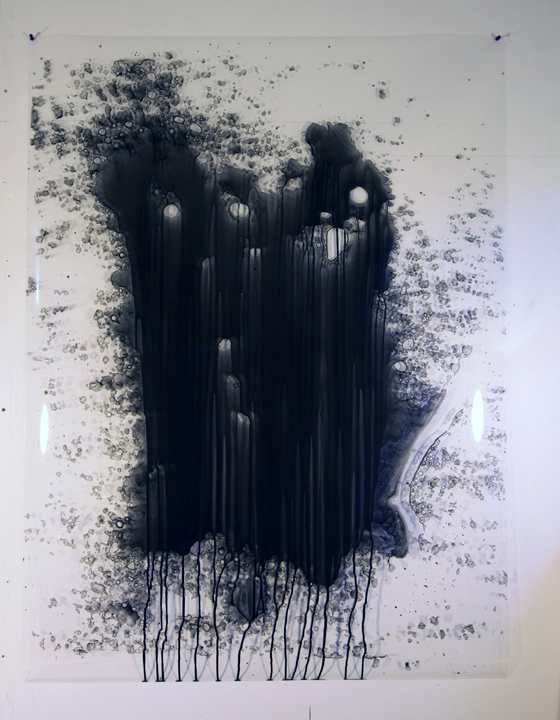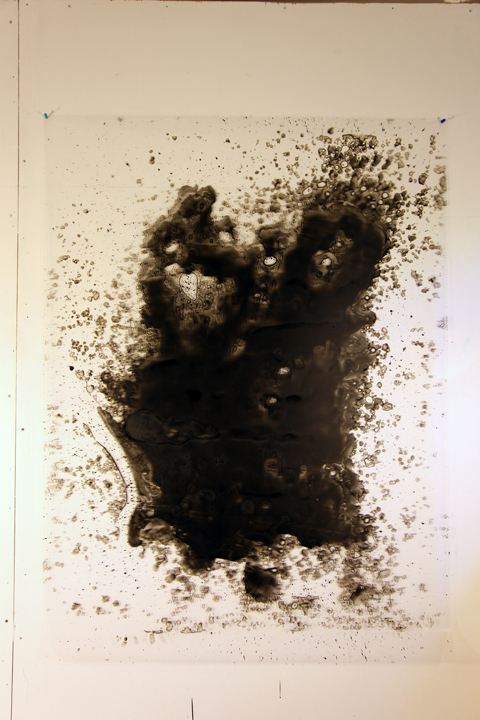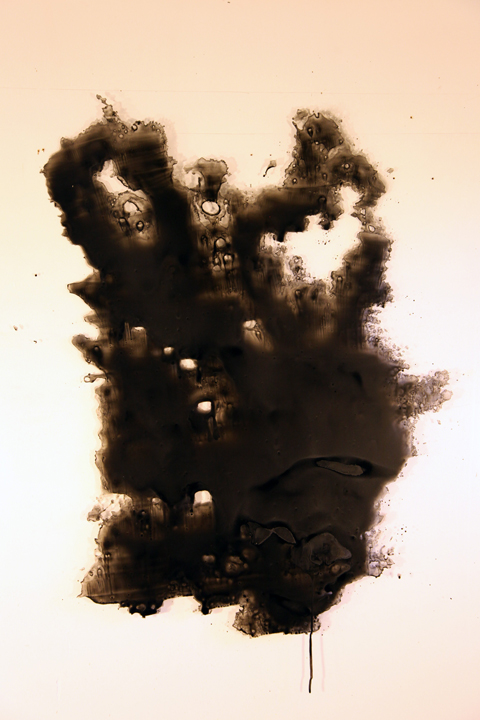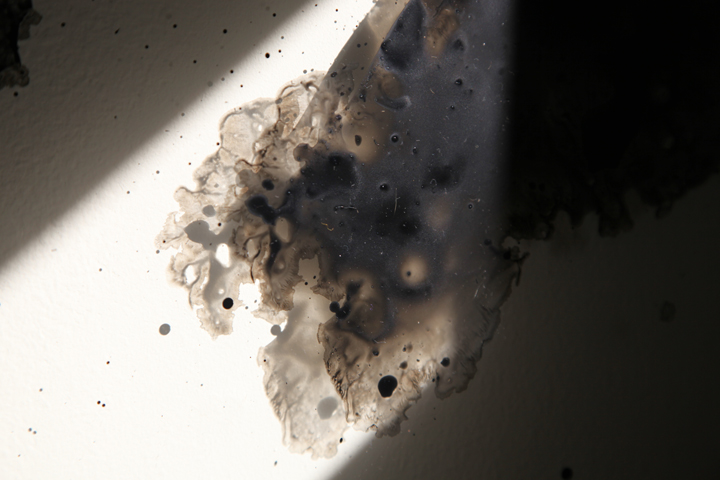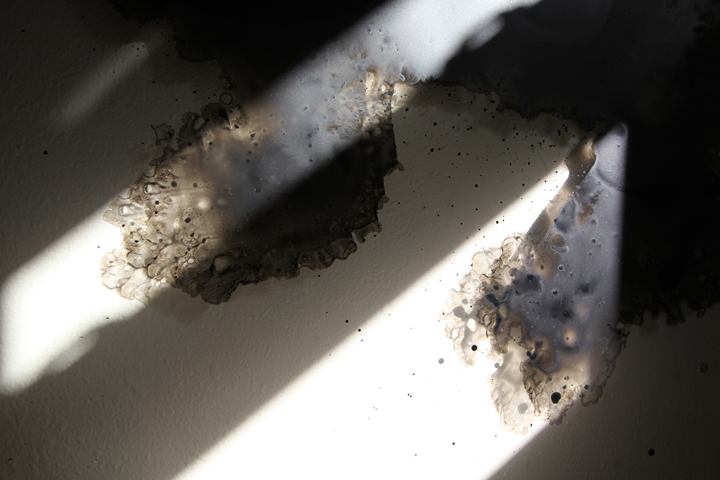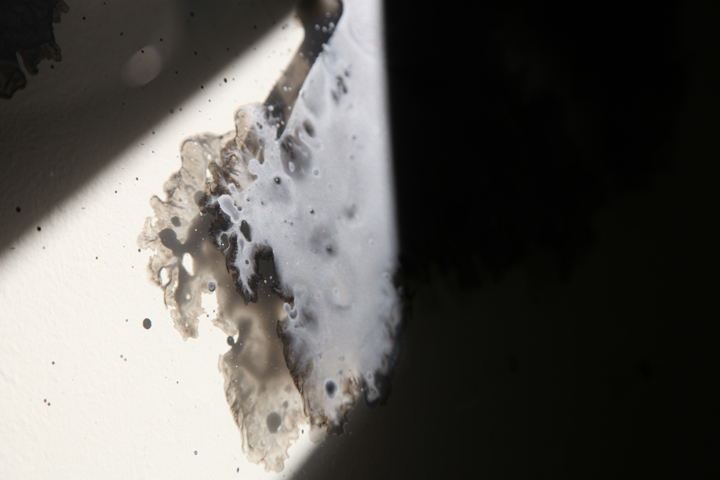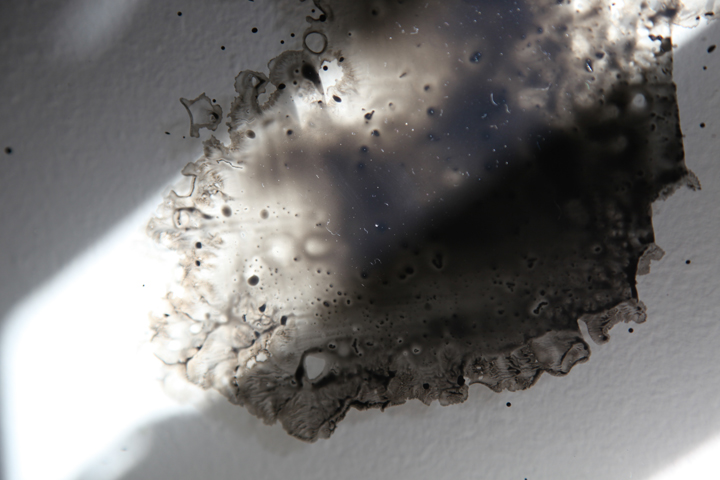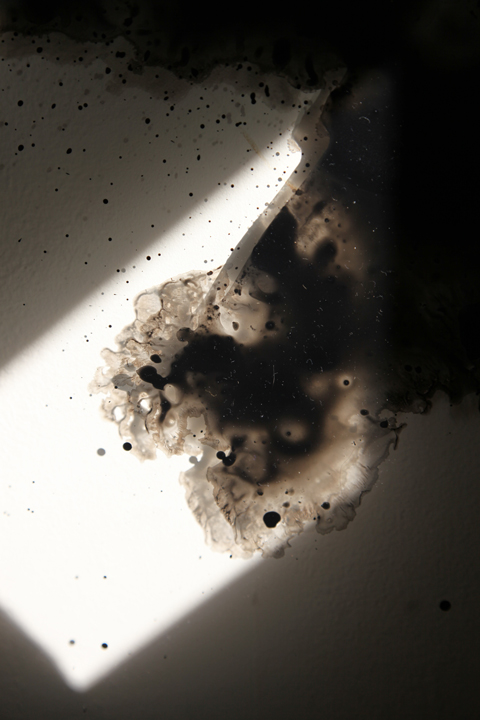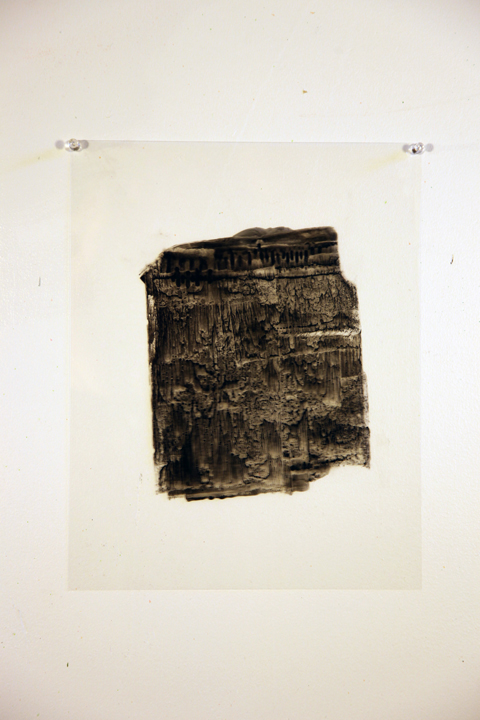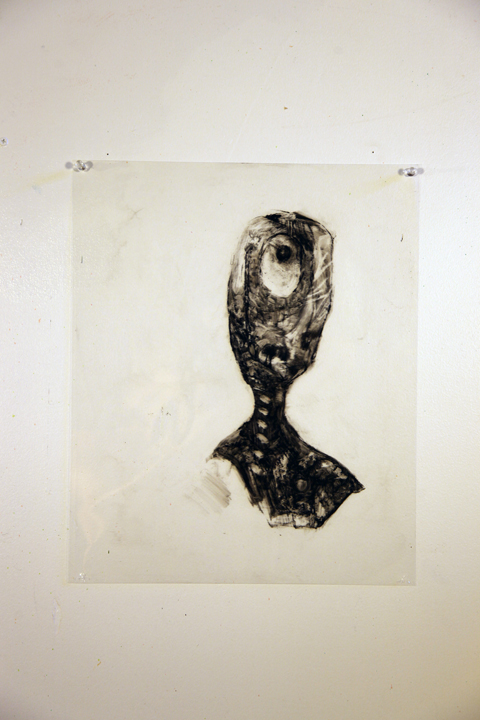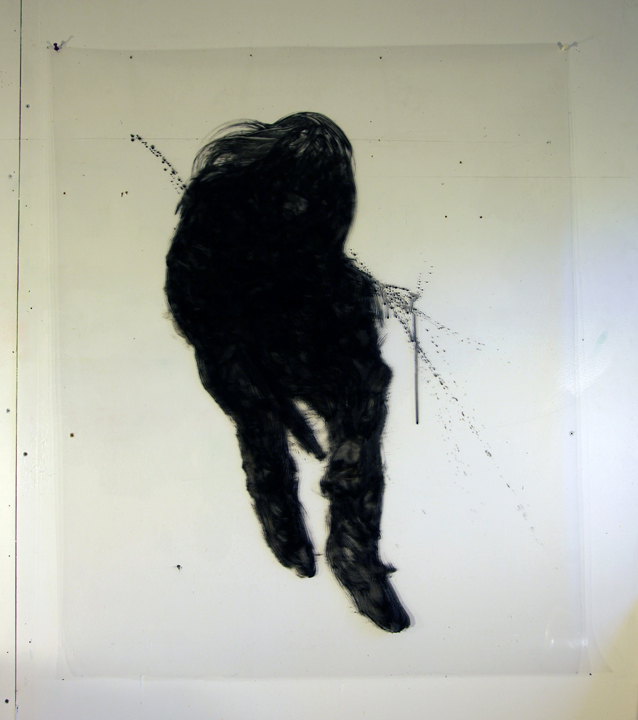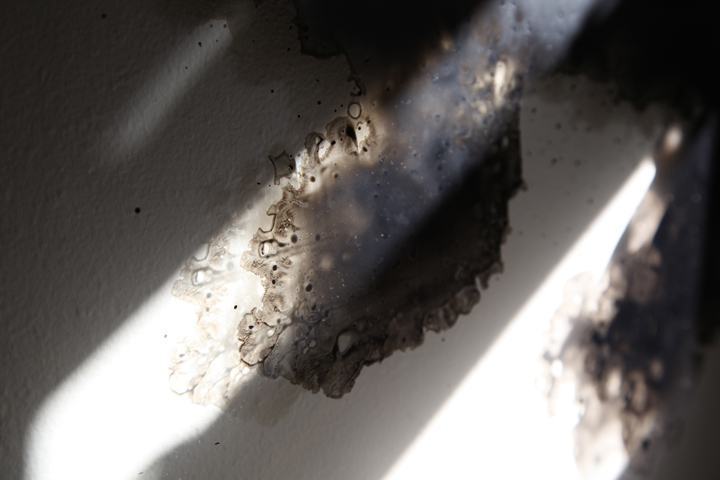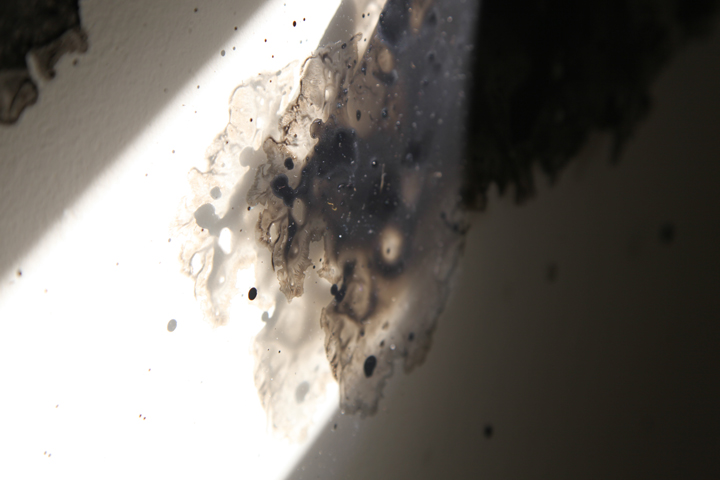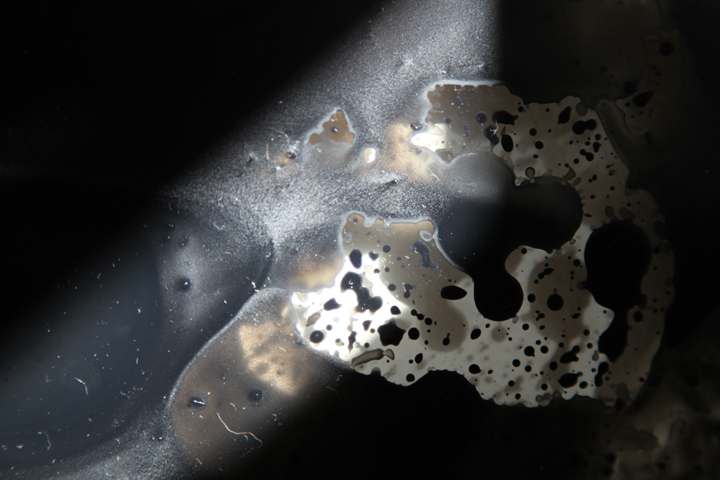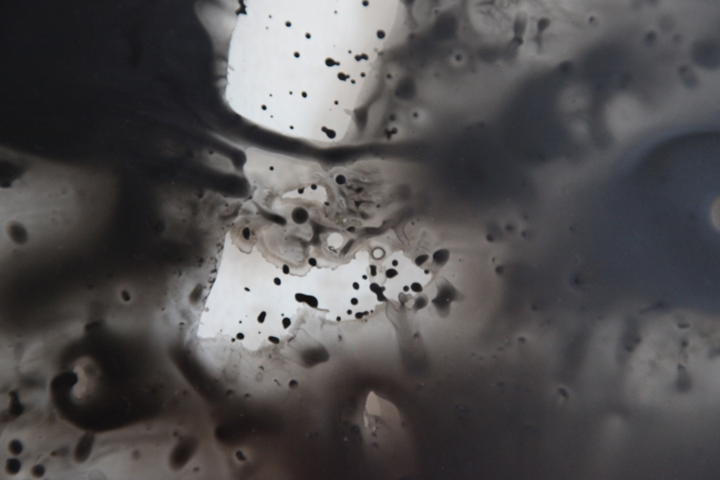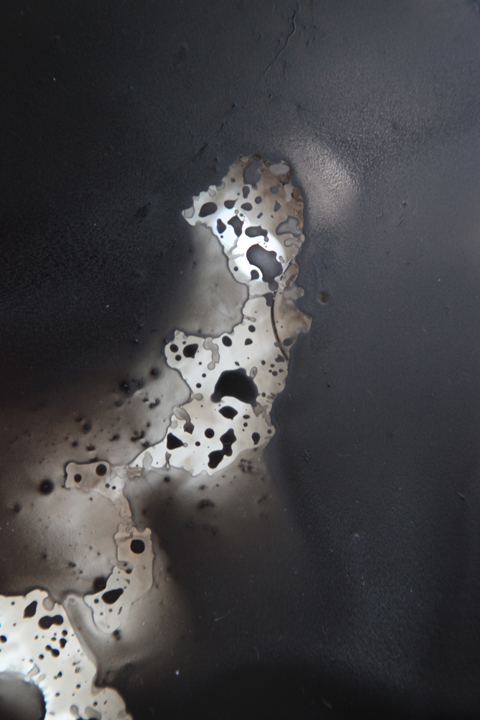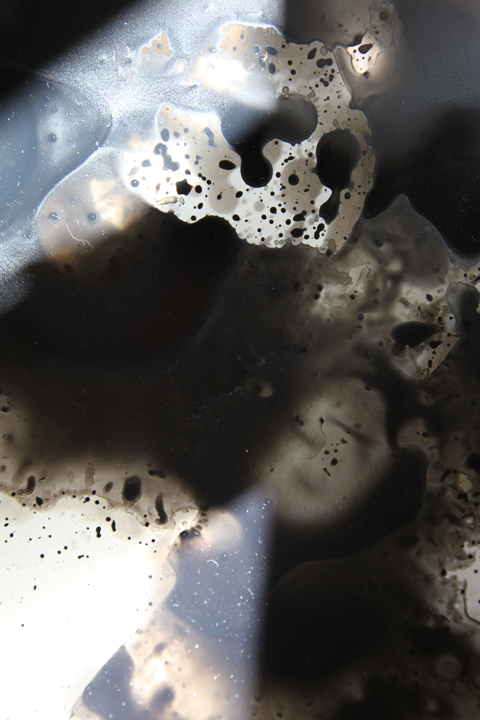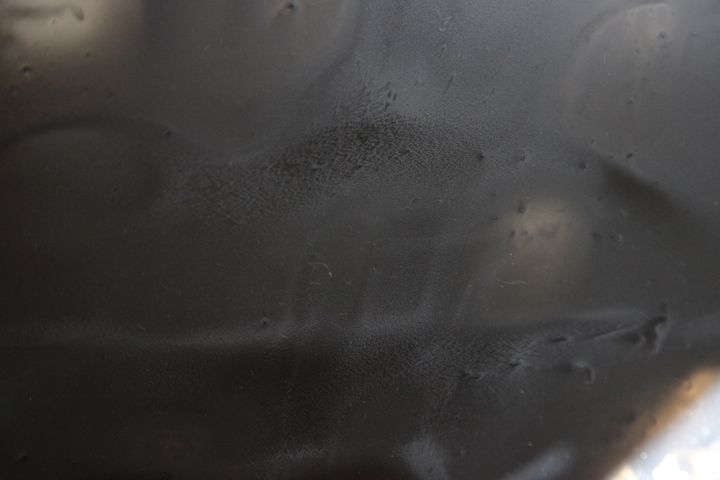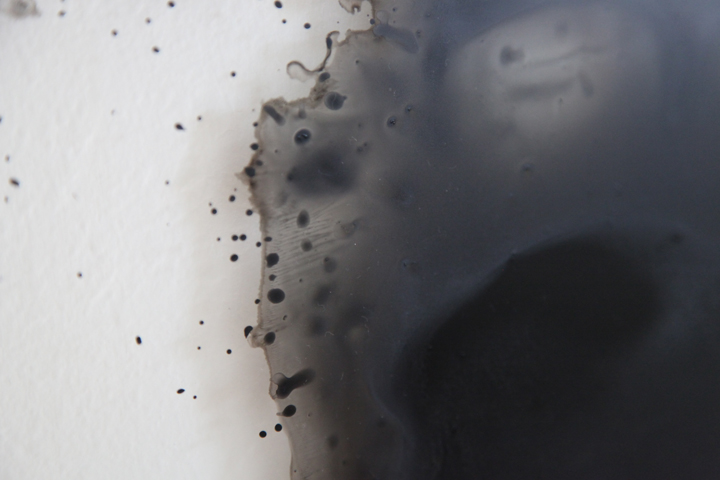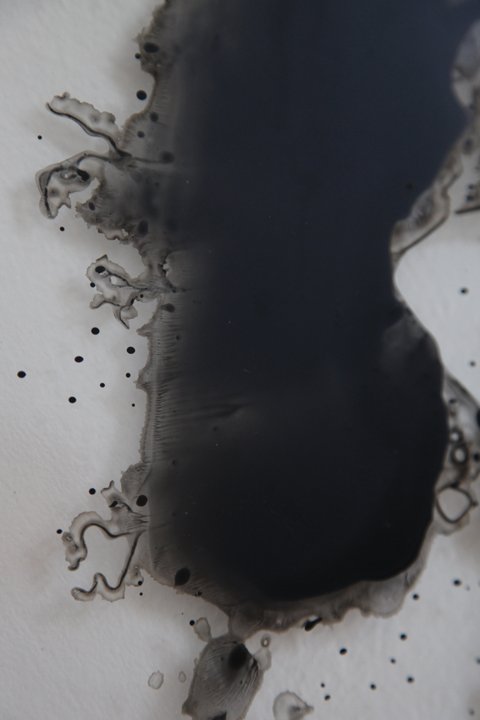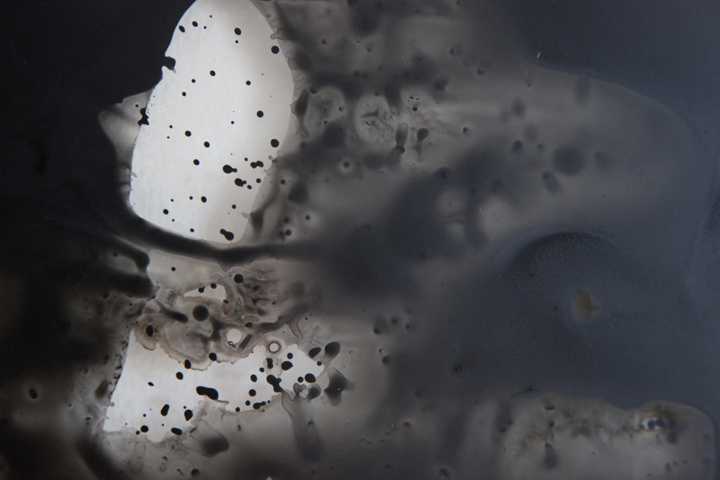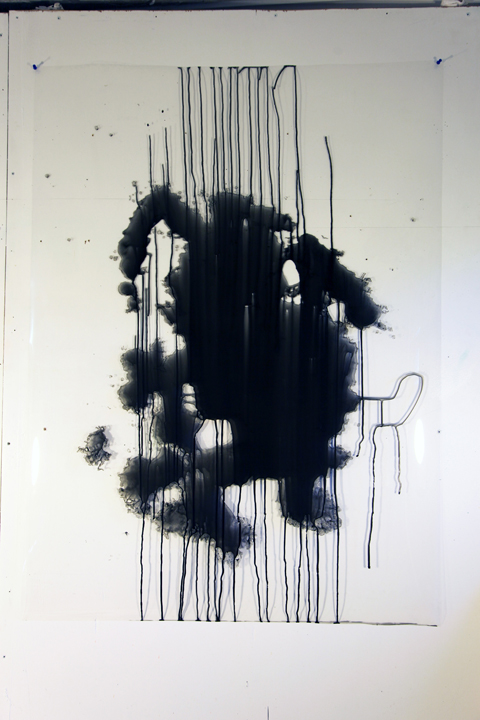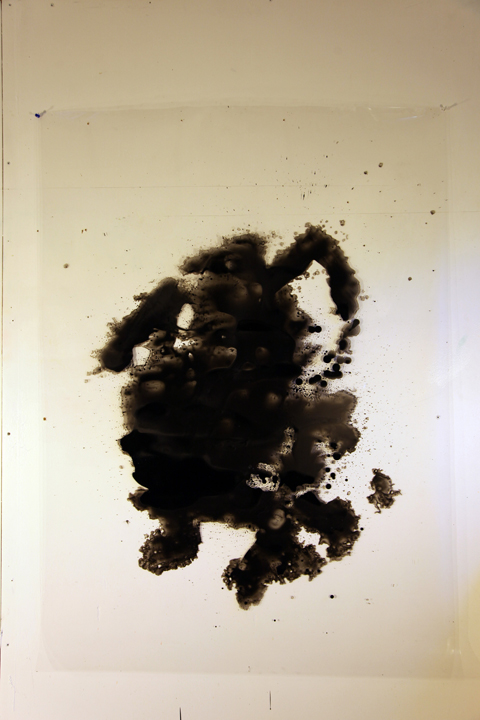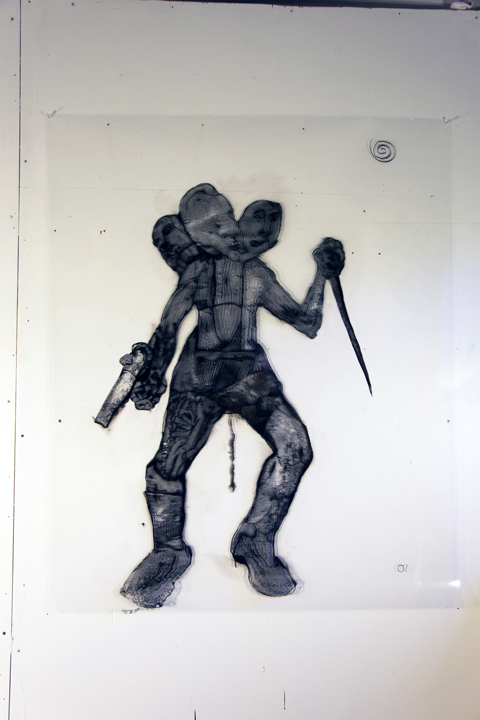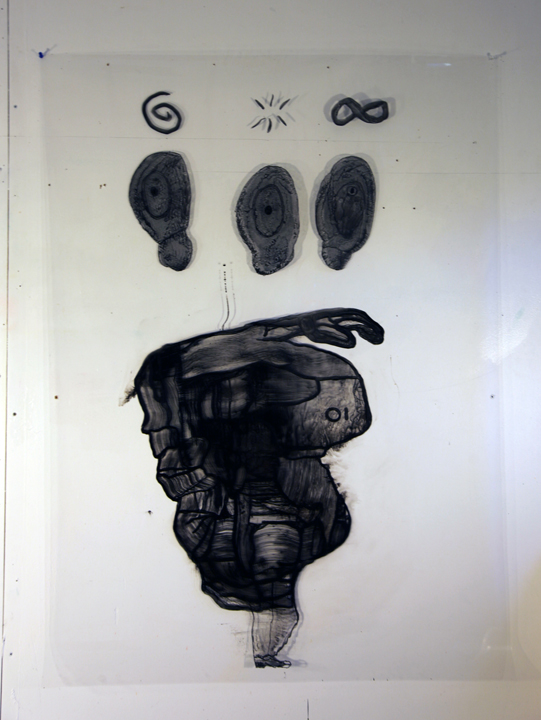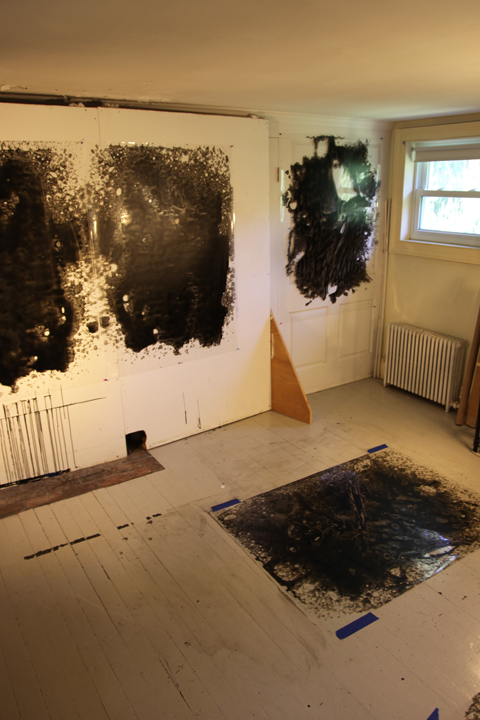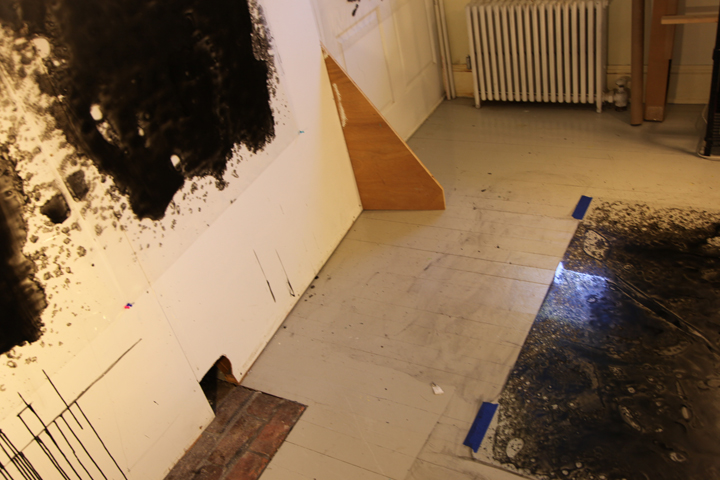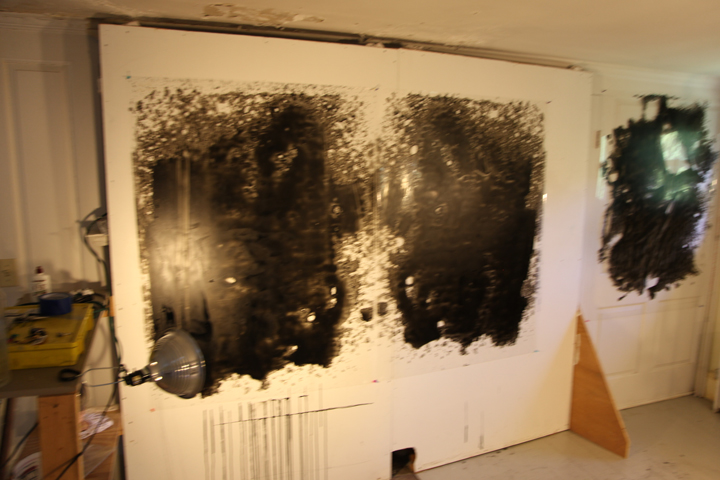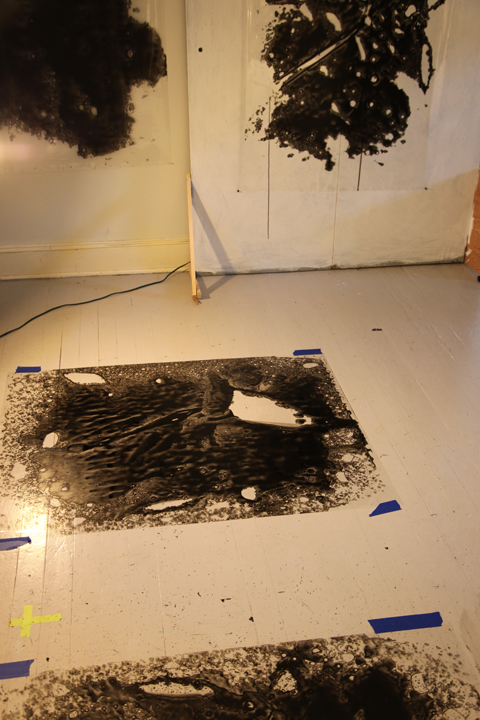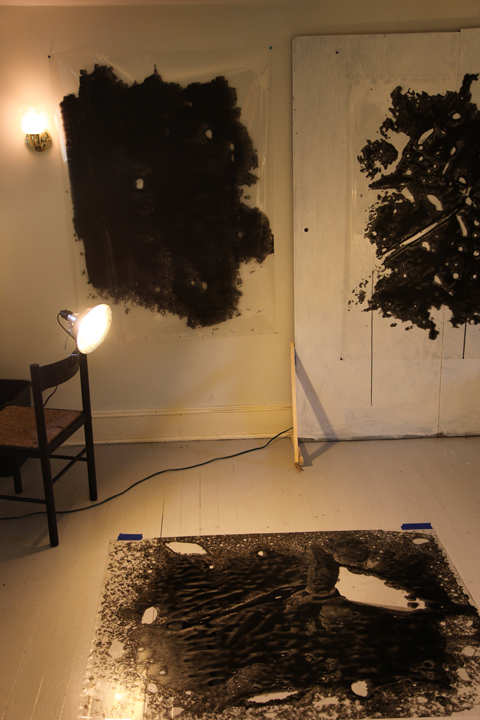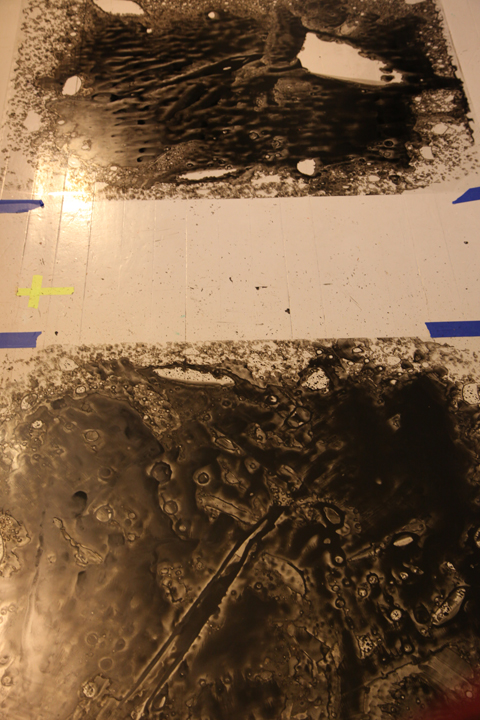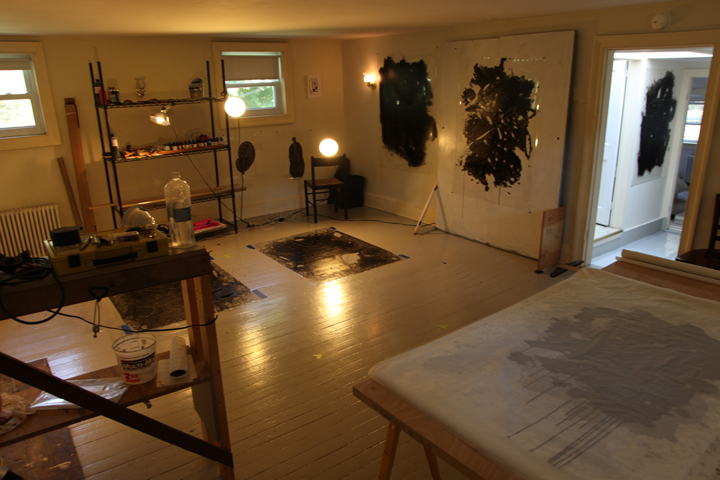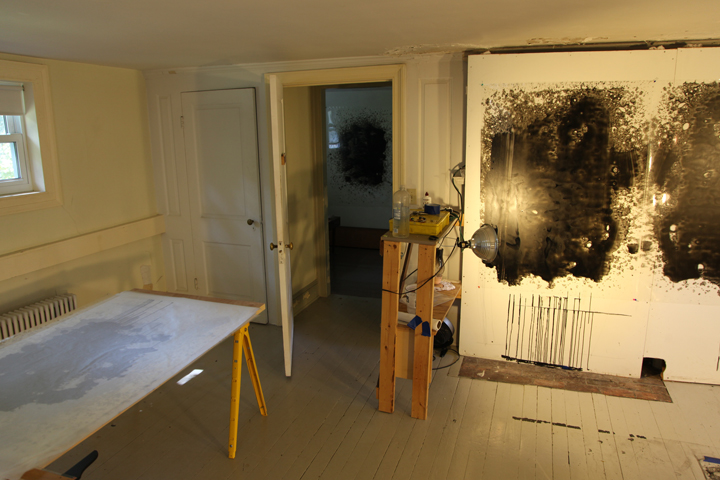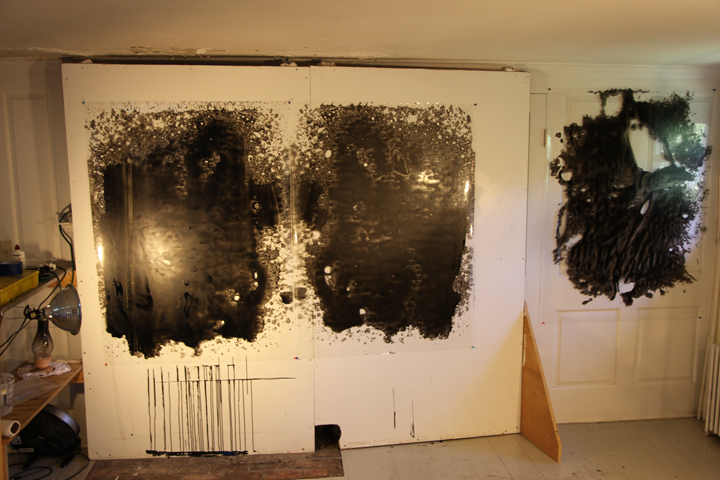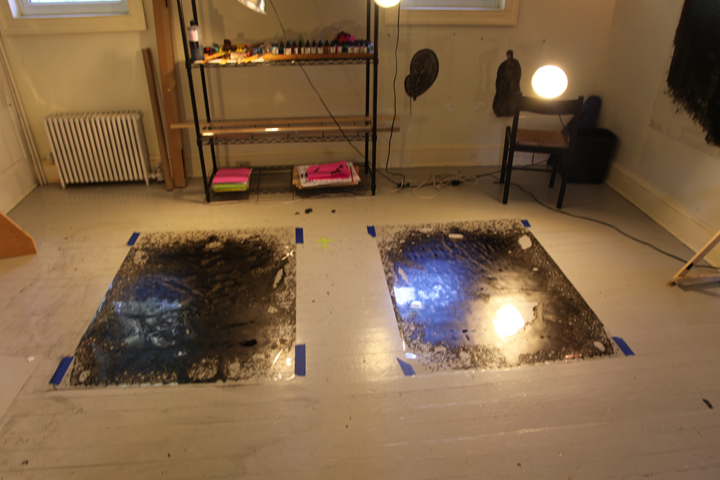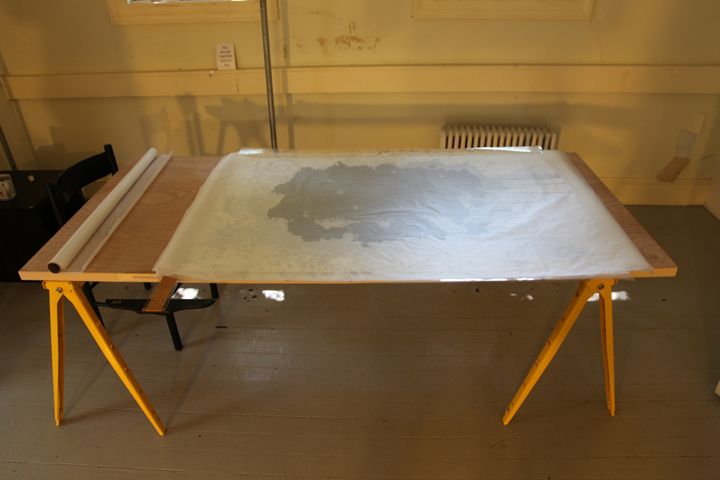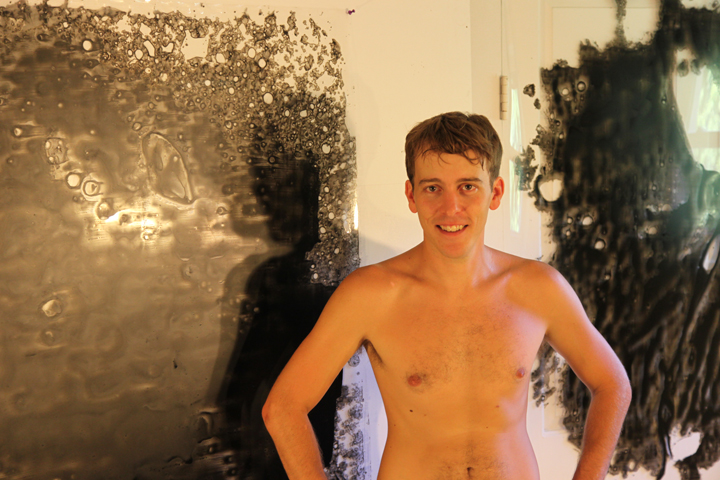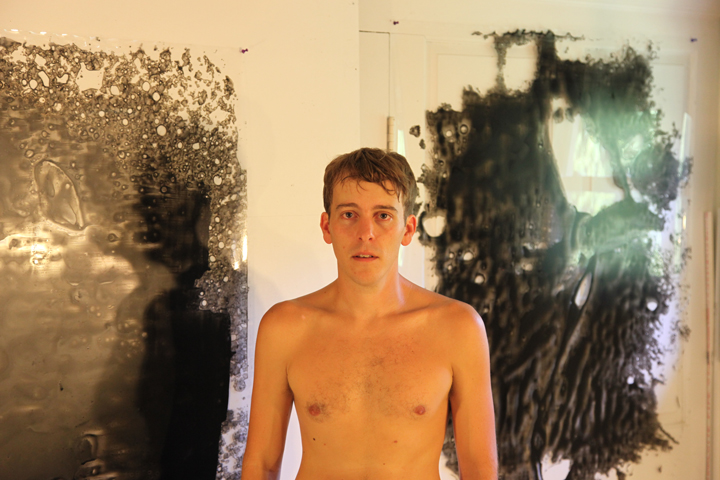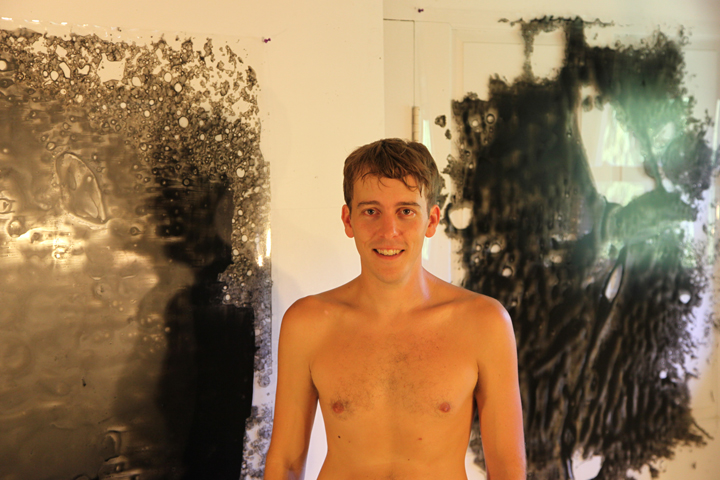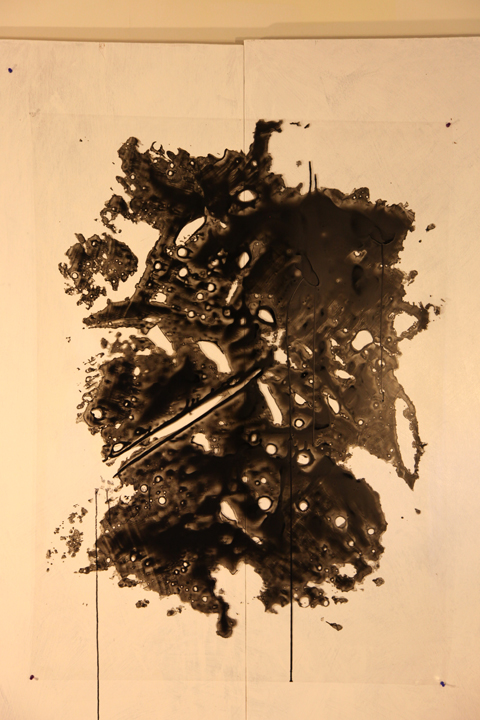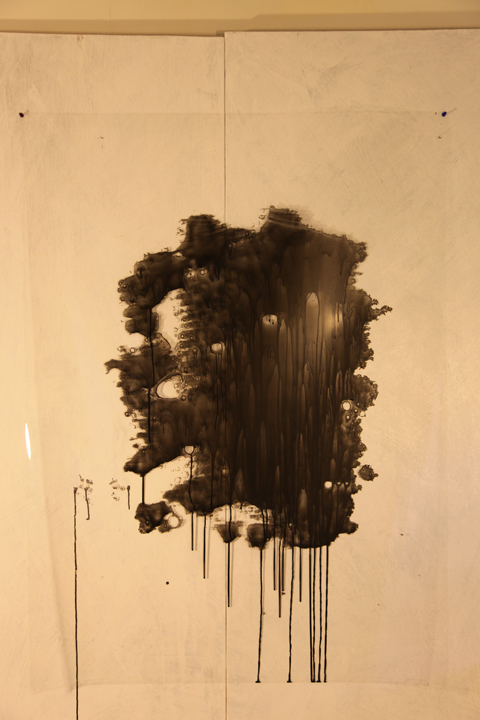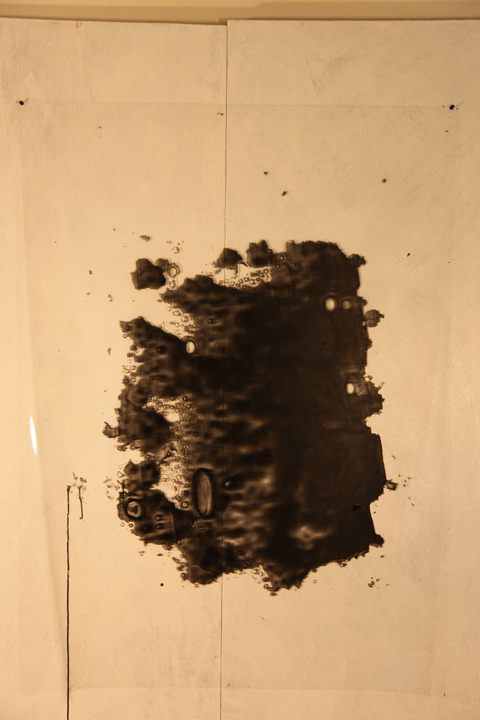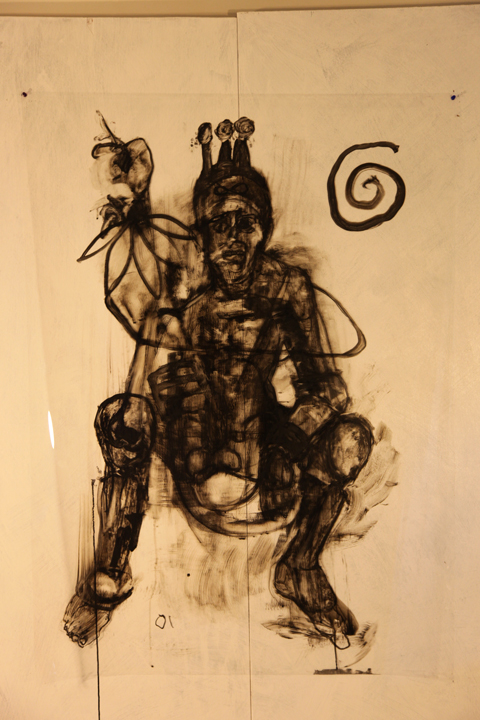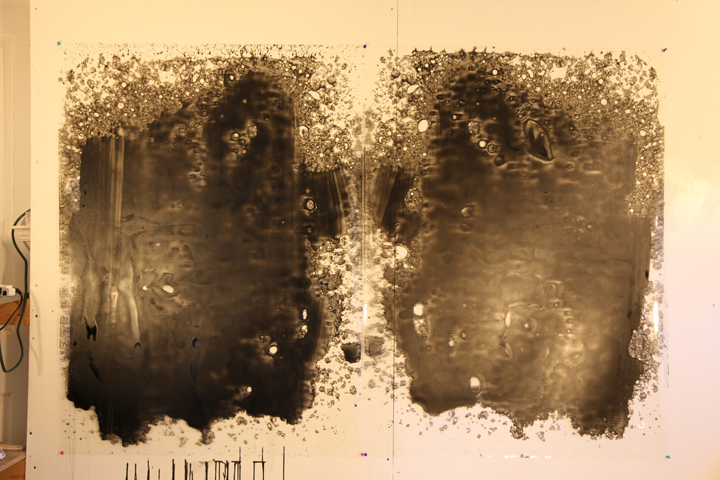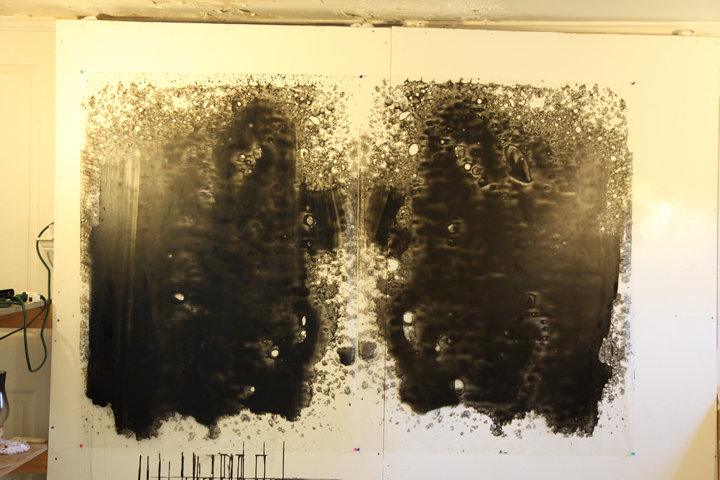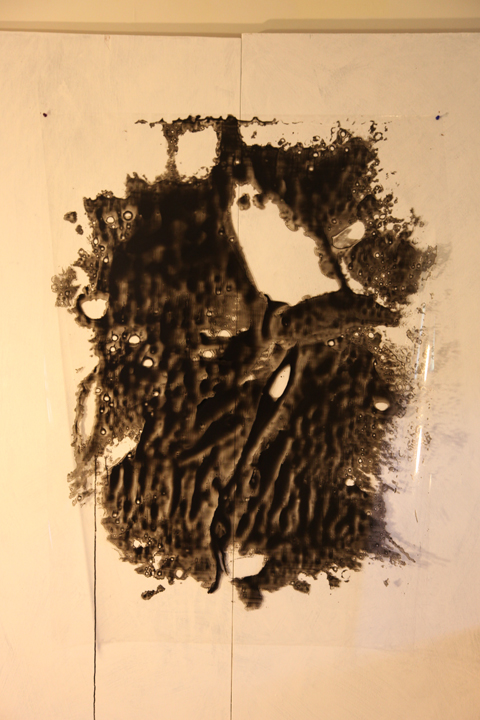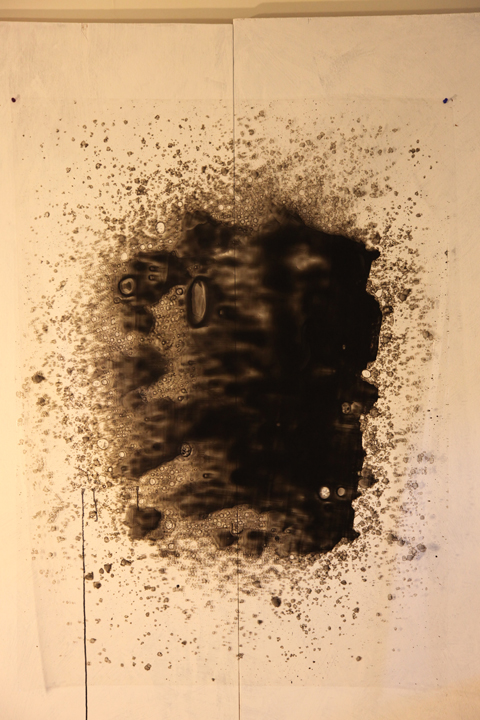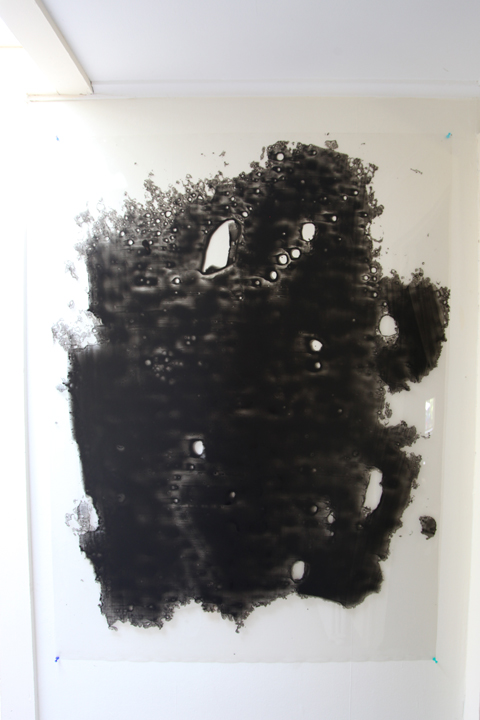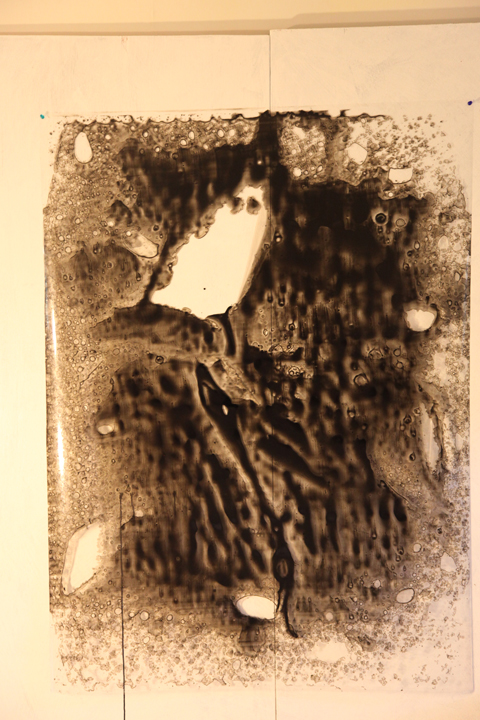The private opening and artists' get-together will be Saturday, February 22.
David Lusk Gallery opens space in Nashville
My longtime friend Dane Carder will be directing a new gallery owned by Memphis-based gallerist David Lusk in Nashville. A private opening will be held February 22, and a public opening will launch the beautiful exhibit space on March 1. I'll be showing recent and new work with DSL in 2014. Below is the press release (click-through, to see all 3 pages), and an image of the gallery, in progress.
Note from Dane: "floors won't be quite so shiny... getting closer."
AFH in the works
Over the holidays we hatched some exciting plans for 2014. We also will be making some important announcements about upcoming projects in the next few weeks. Stay tuned for updates. For now, here's a taste, a new animation:
Happy Holidays from AFH [2013]
Thank you to all who participated in or supported AFH this year!
- DIM TIM: Fallacies of Hope at SLAG Contemporary
- Shane Kennedy/Society for the Prevention of Creative Obsolescence at Brooklyn Fire Proof
- Good Faith Space at STK
- Wilson Novitzki ("Reliability")
- Bold, Jez ("Novad Library")
- Isham Christie + Bold, Jez ["Titles {R} (p)Reformist"]
- Dane Rex ("Nonesuch")
- Clemens Poole, Shane Kennedy, Joe Riley ("Voyage of the Hippo 2")
- Wilson Novitzki + friends ("The Maintenance Series")
- Shane Kennedy ("Something About Encryption")
- Eric Leiser ("Short Films 2000-2013")
- Dane Rex, Shane Kennedy, Wilson Novitzki, Ashley Strout, Ambrose Curry III, Timur York, Jakey Begin + Paul McLean ("Picture 'IS")
- Residency at Chanorth/chashama ("Code Duello" production, with Shane Kennedy)
- NovadZINE [End of the World Edition, Vol.ø, no.ONE] release party at 1067 Pacific People
- + More
NovadZINE [EotW Edition, no.ONE, vol.ø] Release Party
It was a wonderful night. The weather was unseasonably warm. Reuniting with Bold, Jez [visiting from yonder Dakota territory], Ritchie, Konstant and other Novads was a joy. Rob and Andrea of PacificPeople were excellent as usual as hosts for the event. The Open MIC featured a series of terrific performers, presenting poetry, song, music, movement (directed and spontaneous) + more. Seeing the NovadZINE IRL was a revelation. Seven copies were printed for the happening, and more were ordered by the guests. The plates were bound in a calendar format by Radix, and the zine is gorgeous. The passage of a year's seasons has served only to improve our collective achievements. To talk again about OWS & Magic Mountain & Occupy with Art to a receptive audience felt fantastic. Nothing is dead.
Here's what I read:
DIM TIM Note 1
Man loves to Love and Live, and this is his dreaming. Take his dream away, and he will Hate and Murder.
The computer is a sketching tool. Also a tool for Man to count Everything and even imaginaries. The math and science a sketch requires is nearly impossible to imagine, now because so many people have devoted so much to improving the tools for sketching, especially the computer. Imagination has become relatives with numbering. This is nothing new. Counting makes Man think he knows what is and what's going on. That's why he spends so much time numbering.
Man's beginning to realize all numbers are dimensional. He doesn't realize why this terrifies him so. Dimensional numbers can obviate matter. Uh oh. So much for knowing. So much for things. Art can help. It's supposed to remind us why we love, what life is.
Art is enough for itself.
I wouldn't have believed something that works so well could be so poorly used. The shame of it, man. Sickness, we have learned, can be traced. This is true of the sicknesses infecting art.
To see art in dreaming is to see it as it is. To live life as a dream is something else entirely. To dream a life is to set aside the time of dying.
Photo collage courtesy Andrea Haenggi
Notations from Andrea >
Thanks to the “Physical” Open-Mic Participants:
rob, carry, mariette, jez, polina, andrea, paul, chris, robert, lin, richard, aurelio, sari, shane
and Thanks to our “Virtual” Open-Mic Participants:
ale, roo and elke
NovadZINE [EotW Edition] Release Party Supporting Text
“No slave set. All free”: The Novad Collective and Apocalyptic Freedom By KONSTANT Novad On Oct. 3, 2011, about one hundred Occupy zombies marched across from the New York Stock Exchange, a direct action that not only satirized the emptiness in the heart of American capitalism but announced what was soon demonstrated to be widespread utter estrangement from the neoliberal agenda. Of course, the feeling was mutual. The violent expulsion of the encampments in New York and around the country reframed the conflict between the left and the neoliberal hegemony in military terms. The next four or five months saw a continued escalation of repressive force, with the massing of police at demonstrations, use of helicopters, rubber bullets, snatch and grab arrests, and the infiltration of local groups.The counterinsurgency was clearly effective; mass demonstrations now are rare, and resistance in general is episodic and disbursed. Post Occupy, the zombie has returned as a trope of resistance on the left, but the context has shifted from satire of Wall Street to scenarios of the end of the world. The winter, 2014 issue of Adbusters is given to year by year speculation on the global unraveling up to 2047. The publication of “Accelerate Manifesto” by Alex Williams and Nick Srnicek in May, 2013[i] revived theoretical discussion on the left of various scenarios for the trajectory of neoliberal drive to global annihilation. Noam Chomsky[ii], Slavoj Zizek[iii] and Chris Hedges[iv] have added their own apocalyptic warnings to the increasingly insistent voices of climatologists, economists and social theorists concerned about the near prospects for rising sea levels, catastrophic weather and financial collapse. The Occupy zombies have been replaced by doomed humanity. It is one thing to make the general warning that if certain steps are not taken, and soon—reduce carbon emissions, improve working conditons for the precariat, redistribute of wealth—the world will end. It is another to act as if the end is in progress, or has already happened. That is the approach of an art collective and anarchist community engaged in rehearsing apocalyptic and post apocalyptic scenarios as a liberation strategy or, if strategy is too formal a designation for such a group, a starting point for improvisation and collective work. The convergence of art, anarchism and online production is unusual, most collectives tending to favor one identity or the other, but not both. The emphasis on the end of the world as a focus for a project of communal and individual liberation is more unusual still. This is group, called Novads, is comprised of activists from the Zuccotti encampment and members of Magic Mountain, a communal group responsible for many of the Situationist street interventions during the occupation. Since physical convergence in one place is no longer feasible, the group convenes online from the locations around the U.S. and the world where occupiers found themselves in the aftermath of the expulsion. The name combines a sense of nomadic wandering and monadic particularity and reflexivity, along with associations to nova or newness, cataclysmic birth and luminous outburst. In this context the end of the world meme becomes an arena of fluid identity and play: It’s a linguistic manifestation; we’re coining the term fr a new culture based on spontaneous autonomous play. And if we play with it and play IN it we may be able to make some sense of it, engaging with it and our fellow players, calling them NOVAD as we go. As go the NOVADs so goes the world. (anonymous; Call 4 a #Novad Generation?)[v] The dichotomy of a culture of “spontaneous autonomous play” versus capitalist hegemony is offset among Novads by a strong element of ironic detachment from both terms. If play is a withdrawal from capitalist subsumption, subsumption a prospective assimilation of novadic play into market process (one way or another even an art collective cannot entirely escape subsumption), then irony is the real oftheir intersection, the space where value is derealized in play, play in a reflexive notation of value in the coming together of Novads as a collective, a creative group mind as it were, “... just EachOther; consonant reality, resonating at the same waves of collective consciousness.”[vi] The fun is in the doing, to put this in more concrete terms, and the doing produces artifacts (drawings, texts, photographs, paintings uploaded and exchanged online), the intra-group or social value of which depends in part on signifiers of valuelessness: anonymity, impromptu production, incompleteness, bricolage, fragmentation... Novads has been highly productive as an art collective, publishing manifestos, online editions of their zine Deviate, a print version, hosting a lecture series and taking part in various collaborations in the art world, including “Raw,” an affiliated performance space in Brooklyn. The production, it should be stressed, is free in every sense and ephemeral; no one owns the works, no one makes money with them, no one controls them. The approach is purely anarchist: “This is what the new (book) world order looks like for novadic playerz. No one editor. No one writer. No one master. No slave set. All free. All open & transparent. Reliant on systematic trust. Revolutionary.”[vii] In short, the project overall is to develop a leaderless or horizontal online laboratory for experimenting in forms of autonomy or freedom, if you will, under Empire and in sight of the end.The typically uneasy relationship between art and activism is resolved, in this instance, by establishing a line of demarcation. Novads is neither an instrument of a left agenda nor an exercise in utopian rehearsal. In any event, the prospect of yet another instance of a “retreat into enclaves intended to prefigure the very future the are powerless to bring about”[viii] (Toscano) has limited applicaton to an online community, the members of which have jobs and live like anyone else. From the vantage point of a post-Occupy diaspora, however, they see Empire in bleak terms, and this, rather than an off the grid lifestyle, is what prevents them from being like anyone else, to the extent that one make a judgment about the superficially calm great American middle class. It was pouring rain outside When the poet talked to the waters ‘wash away the old world, WASH AWAY THE OLD WORLD’[ix] Apocalyptic thinking among the Novads is certainly informed by Marxist and post Marxist insistence on the inevitable implosion of capitalism, a ‘consummation much to be desired’ passively or perhaps to be hastened by an intensifying of the capitalist death drive, as in the cyberpunk ‘let it burn’ nihilism of Nick Land and more engaged recent variants of Accelerationist aesthetics and politics by Bernardi Bifo[x], Eugene Brennan[xi] and Joshua Ramey[xii]. This far left apocalyticism is important as an ambient, and in some instances parallel discourse to Novad thinking. Popular culture, however,has been a more immediate influence on Novads. Their engagement with the end of the world motif began in response to generally glib speculation that the end of the Mayan calendar on December 21, 2012 signified the end of the world.There is no evidence that the Mayan people thought this, but what mattered was the amount of attention the day received. The appropriation of the Mayan apocalypse for everything from tee shirts to promotion of New Age theories of solar flare kill off and monoculture collapse speaks to a general unease about the near future of life on earth. If the joke is that we pretend to take the faux Mayan apocalypse seriously, the punchline is that we keep telling this kind of joke again and again, with the same kind of compulsive ambivalence that points to climate change in any aberration of the weather or conjures social disintegration on the news of a celebrity meltdown or, worse, a school shooting or urban sniper attack. Any humorous trope repeated often enough turns to confession, and gradually to panicked insistence. A case in point is the apocalyptic subculture to which the Novads, and earlier Occupy Wall Street, refer.In recent years the undead have assumed increasing popularity on television (The Walking Dead), in movies (World War Z), and books (The Zombie Chronicles, The Zombie Survival Guide, and on and on). The market appropriation of necrosis and soullessness is remarkable for its prevalence and general lack irony. The tongue in cheek camp of “Dawn of the Dead,” “Shaun of the Dead,” “Zombie High,” “Cemetary Man” and any number of spinoffs and variants of these in the eighties and nineties has been replaced, in the past ten years or so, by relentlessly grim and inventive ways to tell us that we are all going to die.A Wiki listing of apocalyptic films over the past five decades[xiii], impressionistic and approximate as such a list must be (precisely what is an apocalyptic movie, how far afield did the survey reach, and so on)shows a steady rise from seven in the 1950’s to fourteen in the following decade to a leveling off in the seventies (25), eighties (32) and nineties (32). In the following 9/11-Iraq-Afganistan war decade, however, the number nearly doubles (59). With over thirty apocalyptic movies releaesed between 2010 and 2013, indications are the number will double yet again in this decade. In itself, the existence of a thriving market in end of the world scenarios is not surprising. If social anxieties are increasing in response to global conditions, in particular to the intensifying destructiveness and size of natural disasters (Katrina, Sandy,Yolanda, enormous brush fires in Australia and the American southwest), then we should expect some sort of cultural response; if anything, is is surprising that there is so little indication of panic or widespread survivalist stockpiling.In any event, the apocalyptic trope woven in social concern over climate change and political violence presents a clear market opportunity. Capitalism subsumes the fantasm of mass extinction, including its own eventual extinction, much as it does pretty much everything else that arises in social and even individual consciousness; in the neoliberal economy whatever you believe, desire, or think can and will be sold back to you as a commodity. “Affects and feelings, linguistic abilities, modes of cooperation, forms of know-how and of explicit knowledge, expressions of desire: all these are appropriated and turned into sources of surplus value”[xiv] (Shaviro). Every crisis, even the horrific and increasingly frequent destruction caused by storms supercharged by climate change, presents business opportunities of one sort or another. With apocalyptic pop culture even escalation of anxiety is deterritorialized as a chilling simulation of the market excess that will, possibly, bring about the ‘response of the real’, the event that would appear to answer the mass wish for annihilation depicted in these films. The cartoon character that walks off a cliff and does not fall, in Zizek’s analogy[xv] (Sublime Object 134-35), until it looks down and awakens the knowledge (laws of nature) of gravity in the Real is, in this instance the general public walking in the thin air of endless growth commodity culture and occasionally looking down into recession-war-climate change-world-wide viral catastrophe as if it were another cartoon... The character—Bugs Bunny or whatever—worries, wonders, but keeps walking... Since the collapse of Occupy no mass movement for an anti-capitalist agenda has been forthcoming in the U.S., and those large scale movements that have appeared elsewhere (Brazil, Turkey, Egypt, Bulgaria, and Greece, among others) have been short-lived. Capitalism is here to stay, whatever we take ‘here’ and ‘stay’ to mean in a world where hurricanes with sustained winds near two hundred miles an hour may soon become commonplace: The system under which we live refuses to die, no matter how oppressive and dysfunctional it is. And we double this systemic incapacity with our own inability to imagine any sort of alternative. Such is the dilemma of what Mark Fisher calls “capitalist realism”: the sad and cynical sense that “it’s easier to imagine the end of the world than the end of capitalism.[xvi] Of course, even the end of the world is, in all but a few scenarios, not a complete end but a traumatic condition for renewal. In the end of the world genre, it takes one aback to encounter a film like “Melancholia” or “Seeking a Friend for the End of the World” that really means it; the world ends in these films, the human race becomes extinct. It is far more common for the apocalyptic fantasy to end with a redemptive new beginning, with a promise to respect the earth or foreswear war or nurture our common humanity. Even the Novadic invocation of doomsday is predicated on a promise of a new start: This is the end of the world An obituary And at the same time, a birth certificate Communa[xvii] In other words, the Novads don’t mean it in that literal way of meaning, i.e., they are not fixated on an actual calculus of resource depletion or military escalation, although they occasionally invoke the likelihood of an eventual disaster of some sort. With respect to the possibility, even likeliehood, of natural disasters in the near future they are fairly convinced, although that is about as specific as anyone can be. What might appear to be a schizophrenic, or cynical, invocation of the end-that-will-not-happen-but-it-might is more nuanced than a reading of material conditions. It has to do with the end of what we make of the world. The end, for Novads and probably for others, is a strategic dimension of everyday life under Empire, a brutal appropriation and hollowing out by Empire of the terms and categories of dignified life.Here, opportunity is precarious work, God a provocation for seasonal impulse buying, and freedom the relentless application of state violence around the world: The parallexical use ofdeath by Empire turned fear [into] in the beginning of the twenty first century. The fall of skyscrapers and the doctrine of preemptive strikes coupled with the shadowy thtreat of terrorism gave Empire the ability to justify any and every act of violence against Multitude--.i.e., swarms of excluded, exploited, explored and expropriated bodies--:: bone and flesh turned into disposable abjection[.][xviii] In a sense, the end of the world is capitalism, and capitalism is the end, played out as a self-annihilating and self-perpetuating cycle of market opportunism operating in the cinders, a soulless process of making money where money is to be made, even if this entails reducing cities to empty shells or poisoning the aquifers in a dozen mid-western states in the fraking process. It may be tempting, even comforting on some level, to project a rapid acceleration of this cycle to a point of collapse, but this is to ignore the subsumption of an eventual collapse, and the increasingly anxious anticipation of it, by capitalism; just follow the spikes in energy futures, and of energy company profits, in relation to turmoil in the Middle East. We cannot count on capitalism to fall into the black hole of its inner contradictions “because,” as Befardi Bifo argues, “the process of autonomous subjectivation is jeopardized by chaotic acceleration, and social subjectivity is captured and subjugated by capitalist governance, which is a system of automatic mechanisms running at blinding speed.”[xix] The end is in Empire, is a functional dimension of it, much as terrorism is a dimension of the U.S. military discourse not merely as a threat but as the Real of its own aggression.... We cannot engage capitalism except to be part of it, can scarcely exist except as monads of surplus value. Labor is no longer the primary constituent of surplus value. As Steven Shaviro observers: …we are still working, even when we consume, and even when we are asleep. Affects and feelings, linguistic abilities, modes of cooperation, forms of know-how and of explicit knowledge, expressions of desire: all these are appropriated and turned into sources of surplus value.[xx] Where sleep, dreams, desires, modes of cooperation do not fall under the sway of capitalism such terms lose their context and function, the world they construct ceases to cohere. Are you actually likable ifyou are not liked on Facebook? How do you know you’re in shape unless you can finally wear that pair of jeans in that size? But what if you work sixteen hours a day, or more, at minimum wage and have to time for Facebook, and no money to spare for Gap jeans? The one vulnerability of capitalism now is that whole categories of persons—artists, students, undocumented workers, the workingpoor, the growing swath of workers once considered middle class and now more appropriately understood as the precariat—are losing their place in a system their labor helps to sustain. How do we get to a place beyond or outside of capitalism except by the ejective force of capitalism itself? Increasing numbers of such people can see what is being done to them. This does not mean that one can envision a plausible scenario for overthrow in the near or even foreseeable future. But this awareness does make possible an intellectual and even physical journey to the spaces between the binaries of capitalism-socialism, capitalism-fill in the blank other (anarchism, fascism...). The end of the world, in one way of looking at things, is not the eventual outcome of a series of episodic convulsions—social disorder in Turkey and Brazil, mass destruction in the Philippines, the spread of Sunni-Shiite conflict throughout the Middle East—it is the gap between our experience of ongoing, smaller scale social and environmental insults and the capitalist construction of them.... Every now and then, and how this happens depends on the individual, the the left-right, conservative-progressive false polarity that governs discourse in the West collapses and a wormhole opens in the discourse, taking us to a black place. In the space between our increasing unease or anger over the gradual deterioration of work, environment, and social life and the insular complacency of the governmental/corporate imaginary, the Symbolic as the web of rules and assumptions that regulates our engagement with the world crumbles and drops away. This is not the place of a dialectical resolution of the neoliberal-socialist antagonism (an antagonism largely in abeyance in the West), it is the place where such terms have no meaning or application. Here, art as a neoliberal construction has no meaning, which is to say that art as a designation has no function at all and is rarely used. Names and other conceptual trappins of identity in the capitalist hegemony are also suspect.Novads have experimented with adopting numbers in place of names, and mathematic neologisms for improvistionas and impromptu riffs on ideas: fibonacci square, rhizomatic encounters, and the like. Although for practical reasons one cannot shed one’s social security number or credit card numbers, one can from time to time assume an alternate identity: prime, constant, tuple, tangent and other deliberately pretentious and silly spoofs of distopian nightmares in which names are replaced by arbitrarily assigned numbers. Novadic play with notional categories—person, agency, time, life and death, end and beginning—should be seen in relation to this larger context of neoliberal conceptual gamesmanship. Foundational concepts like democracy, equality, fairness, justice, privacy, and truth have become so discredited by corporate and Pentagon manipulation that one one can only use them with protective gauze of irony or sarcasm. The tactics of cynical doubletalk and distortion—the decorated veteran of Viet Nam is an unpatriotic coward, the president is a socialist for adopting the health care policy of a Replubican governor and so on—have become a pervasive, normative patter or background noise in our daily lives, the truth value of this patter deriving not from what is said but from the ideological position that informs it and the implied, strategic calculation of what the distortion might mean to a sympathetic audience. One radio talk show host can be relied on to deliver outrageous comments about women and reproductive rights, consolidating support among certain rightwing listenters, another talk show host to ravel elaborate conspiracy theories around the failure of the medical establishment to support juicing and dietary supplements. “How is the rest of the world not all cyborgs, zombies or vampires by now?”[xxi] Consider the embattled state of just a few of the major categories of experience. In Empire, isn’t nature merely raw material to be subsumed and marketed, rather than a living system to be nurtured and protected? The environment is deterratorialized, a wheat field become a site of extractive efficiencies—so many bushels per acre of a mono-crop—with no relation to the surrounding ecosystem.When the honeybee vanishes from these vast fields, and even the commercial honeybee business falls to species collapse, this is not merely dominion over the earth but the transformation of creatures into chemically treated and mechanically processed raw materials. The logical exentsion of this is the announcement that scientists have devised a cloning method to produce meat in a petrie dish; it is only a matter of time before flesh has become so thoroughly instrumentalized that even its species origin will be extracted like so much gristle and bone. The essence of animal is the meat concealed beneath a contingent exterior; thus the rationale of the all too common advertising trope of a happy pig sharpening the knife that will be used to slice out its soon to be barbecued pork... Similarly, in Empire, isn’t a corporation not simply a person but THE person? The right of enjoyment or the pursuit of happiness resides in the corporation, so now the maximization of profit is valorized as a fiduciary duty and the advocacy of an increase in the minimum wage condemned as class warfare (akin to germ warfare, an infection to stopped). Voter suppression laws disenfranchise categories of person (elderly persons of color, students, and so on), and campaign finance deregulation elevates capital over the voting classes that remain, concentrating power in the hands of those most beholden to business. Enfranchisement and personhood have migrated to corporations and shareholder voting blocks. In Empire, hasn’t love died and been replaced by stimulants to profit, from prenups to porn to chemical treatment of erectile dysfunction.Is opposition to gay marriage merely homophobia or does it include a defensive response to the decline of heteronormative contractual relationships: marriage, disenchantment, divorce, shared custody...In Empire, the wedding dress has assumed the fascination once accorded to the bride, the exobritant wedding reception the voyeuristic curiosity once directed to the first night...Even transgression is deterritorialized, taken from the realm of morality and emptied and packaged as a product by way of fashion, entertainment, medicine... In the face of this great wall of corporate obfuscation, Novads is to work in the zero space, the void between states and categories: to publish a journal without page numbers, author credits or editorial staff; to circulate the zine through “salons” or “Book Clubs for the End of the World” where participants are asked to decide how they would treat each other at the end, what they would read to each other as the world was approaching collapse, and what note or text they would write if it was their last.All of this is an attempt to plunge into the metaphor of the apocalypse and out of commodity culture ending, as in Badiou’s “politics without place,”[xxii] a politics which is no longer just a particular intervention into a particular constellation of social places (classes, national, religious, economic, cultural places), but an “action without place,” an action which, in a “mixture of violence, abstraction, and final peace,”creates its own virtual/non-existent space of collectivity based on the axiom of equality.”[xxiii] Liberation is a process of decentered, nomadic excursions, a dendritic radiation from the nodes of New York, Sao Paulo, Cairo, Paris and small cities in the American west. The Novad experiment should also be seen in relation to gaming culture; the formation of interactive online communities within video game environments has provided general models for the Novads not only in the use of avatars or online identities but in the mapping and illustration of an alternate utopian space complete with conceptual process spaces like The School Memory, The School of Light, and The Sensarium, online points of convergence where contributors are invited to play with the organizing frame in whatever medium and direction they wish. This is the conceptual architecture for future actual or online manifestations, perhaps anarchist, post-Novadic strategy and role-playing online games. This crossover of identity from video games (and the online chat that is part of these games) to an anarchist cultural endeavor may well be the next pioneering area for activist culture.[xxiv] If the world is dead, where are we, then? We are in a space with doors open all ways, with no national or institutional boundaries, a space of virtual freedom. “YOU are the beginning of the [new] World. Your place in it is established as WE READ.”[xxv] Much as the Novadic experiment is congruent with a general apocalyptic turn, it offers no prophetic vision, and no structural agenda to advance or accelerate an anti-capitalist revolution. Indeed, the Novads are detached even from the end of the world trope: Some time before the end of the world we’ll wake up and realize that it doesn’t matter anymore. People will realize that the Apocalypse is a myth, which actually signifies something simple as change, flux or flow. Change is coming [& going] & change will come [& go] again.[xxvi] Freedom of subjectivity from Empire will not be accomplished, or even within sight, so long as the nightmare discourse of the terminal and apocalyptic continues to hold on the imaginary, whether this be expressed in the realpolitik of terrorist ‘existential threats’ and governmental countermeasures, or in the spurious choice of scarcity versus unregulated extraction of resources in the leadup to the next consciousness changing natural catastrophe.The Novads, like Occupy with Art and Magic Mountain, the anarchist collectives from which it is descended, is caught in the ambiguous position of evolving a liberatory art process without, as yet, determining the post-apocalyptic, or more accurately the a-apocalyptic, vision. I argue that the process is liberation, that working collectively in horizontal, anonymous nodes of visual artists and writers (and combinations of the two) across the distances imposed by the repression of Occupy provides one glimpse of another world. [i] ACCELERATE MANIFESTO for an Accelerationist Politics. Alex Williams and Nick Srnicek: Critical Legal Thinking, May 14, 2013 (http://criticallegalthinking.com/2013/05/14/accelerate-manifesto-for-an-accelerationist-politics) [ii] Noam Chomsky, “The Eve of Destruction,” Tomdispatch.com, June 4, 2013 (http://www.tomdispatch.com/blog/175707) [iii] Zizek, Slavoj. Living in the End of Times. Verso: New York, Revd ed. (2011). [iv] Hedges, Chris. “Stand Still for the Apocalypse.” Truthdig, Nov. 6, 2012 (http://www.truthdig.com/report/item/stand_still_for_the_apocalypse_20121126) [v] Novad: END OF THE WORLD EDITION, no.ONE, Vol.ø Chimera Collective [RevGames/Occupational Art School (All Nodes)/Novads/Orig. A+C ~OWS], Jan. 2012 [there are no page numbers in this edition] (http://issuu.com/novadzine/docs/novad_zine) [vi] Ibid. [vii] Ibid. [viii] Alberto Toscanno, “The Prejudice Against Prometheus,” Stir, Summer 2011 (http://stirtoaction.com/the-prejudice-against-prometheus/) [ix] Ibid. [x] Franco Berardi Bifo, “Accelerationism Questioned from the Point of View of the Body,” e-flux Journal, 2013 (http://www.e-flux.com/journal/accelerationism-questioned-from-the-point-of-view-of-the-body) [xi] Eugene Brennan. “Debate is Idiot Distraction”: Accelerationism and the Politics of the Internet. 3:AM Magazine: Monday, August 12th, 2013 (http://www.3ammagazine.com/3am/debate-is-idiot-distraction-accelerationism-and-the-politics-of-the-internet) [xii] Joshua Ramey. “Inhuman Already? Zombies, Vampires, and the Accelerationist Moment,” An und für sich Thursday, June 27, 2013 (itself.wordpress.com/2013/06/27/inhuman-already-zombies-vampires-and-the-accelerationist-moment/) [xiii] Wikipedia, “List of Apocalyptic Films,” (http://en.wikipedia.org/wiki/List_of_apocalyptic_films) [xiv] Steven Shaviro. “Accelerationist Aesthetics: Necessary Inefficiency in Times of Real Subsumption,” e-flux #46, Oct. , 2013 (http://www.e-flux.com/journal/accelerationist-aesthetics-necessary-inefficiency-in-times-of-real-subsumption/) [xv] Zizek, Slavoj. The Sublime Object of Ideology. New York: Verso, 2009, pp. 134-35. [xvi] Shaviro, Accelerationist Aesthetics, op. cit. [xvii] Novad: END OF THE WORL, op. cit. [xviii] Ibid. [xix] Franco Berardi Bifo. “Accelerationism Questioned from the Point of View of the Body.” e-flux, op. cit. [xx] Shaviro, op cit. [xxi] Novad: END OF THE WORLD, op. cit. [xxii] Alain Badiou, “Drawing,” lacanian ink 28, p. 45 qutd. In Slavoj Žižek. "Excursions into Philosophy." in: Lacan.com. 2009. (English) [xxiii] Zizek, ibid. [xxiv] An exhibition at Eyebeam in January, 2012, “Activist Technology Demo Day” presented a wide spectrum of projects along these lines, including Augmented Reality and People’s Skype. [xxv] Novad, End of the World, op. Cit. [xxvi] Ibid.
NovadZINE [EotW Edition], FRESH OUT OF THE BOX
It's been a year, since the world ended. We celebrate the occasion on Saturday by releasing our inaugural NovadZINE, End of the World Edition, unto this troubled world. Andrea & Rob sent us photos of one of the little Chimeras, which is about to commence a global Novadic salon tour:
[NovadZine End of the World Edition, Vol. ø, No. One] Release Party
Remember when the world was supposed to end, one year ago? The Novads celebrated that non-event/conjecture with a momentous project, celebrating revolution against systemic time-based Terror regimes. NovadZINE EotW, Vol.ø, No. One was the beautiful result. I created the 96 gorgeous color plates for the book, featuring a phenomenal mix of Novadic arts and culture by many beloved contributors from the convergent circles of original OWS A+C, OwA, AFH, RevGamerz, Novads & Magic Mountain. It was and is truly a labor of love and wonder. Preview the zine at ISSUU HERE or check out the plates HERE on Facebook.
Now we are ready to start phase 2 of the production, which entails dispersion of the EotW ZINE across the globe. Of course, the Novads will have a party to mark the occasion of the first five full (5) copies [Artist Proof(s)] of the ZINE manifesting in real life [IRL]. The gathering will be hosted by 1067 Pacific People. Details below.
1067 PacificPeople present
SOLSTICE OPEN MIC & DEVIATE ZINE RELEASE PARTAY
TESTING TESTING 1,2,3: EndoftheWorld speech acts
Saturday, December 21
SIGN IN 3:32pm STARTS 4:32pm
@1067 Pacific Street, Brooklyn
In “TESTING TESTING 1 2 3: EndoftheWorld speech acts” artist Andrea Haenggi and writer Robert Neuwirth invite people to get together for an open mic on the solstice transformation of nothingness to sense the pleasure of communicating in a quest for gestures, movement, and encounters. We will break after approximately 20 minutes of the speech acts for a 20 minute partay to dance to eat to celebrate the release of our dear friends DEVIATE ZINE “End of the World Edition no. ONE, Vol.ø “, produced by the Novad anarchist art collective. Then we return to more speech acts before we go back to again to the DEVIATE ZINE “End of the World” Release Partay.
WANT TO PERFORM? This Open Mic has two micro rules that can start now -- just email Andrea at andrea@amdat.org and you can be part of the line-up and or sign-in at the day of the event at 3:32 pm
1. Any speech act goes (dance speech, talk speech, music speech...) so long you start with a test phrase to check the mic for its frequency response.
2. End of the world speech acts can not be longer then 3 minutes
For “TESTING TESTING 1-2-3: EndoftheWorld speech acts” we encourage all participants and audience members to come on the solstice switch time (4:32 pm is sunset on the year’s shortest day) to be together in this nihilist-style approach. It will be mostly outdoors so please dress warm. The more people, the more we can warm up by being close to each other! Bring all your friends so we can pack the 2000 square foot outdoor space.
The Event is free, but please bring some food, drinks and anything that goes to share with others.
Join us at Scenic Superfical Garage Resort @1067 Pacific Street, Brooklyn, http://goo.gl/ugOcy.
Onward
--------------------------
1067 PacificPeople
Twitter: @1067PacificPeop
-------------------------------
ABOUT: 1067 PacificPeople Installation/Performance research field work
SCENIC SUPERFICIAL GARAGE RESORT gets built on: “The desire to be touched by something. Untouched. Desert. Urban Desert. Landscape Touched. Architecture Touched. People Touched. Altered. Human interference. Desertification. Desire expresses movement. Movement expresses Desire. Movement includes the missing. The failed communication. Desire to express the failed communication. Desire to Produce Affections and Sensations to address the uneasy sense of dislocation and detachment that hangs in the air.”
-----------------
http://www.andreahaenggi.net
http://stealthofnations.blogspot.com
New Essay in Brooklyn Rail
Fall 2013
It's been a beautiful autumn here in the city. Since returning from the Chanorth residency, I've been writing a text on free speech and property. One of the chapters will be published in the Brooklyn Rail's November issue. Good Faith Space is active, with Voyage of the Hippo 2 in September, and three shows planned for October, Including the launch of Wilson Novitzki's musical program, The Maintenance Series, a screening program (no title yet) featuring "Elementals," short films and animations by the amazing Eric Leiser, and another iteration of Shane Kennedy's iconic wall paintings, for the Society for the Prevention of Creative Obsolescence, in an expo called, "Something About Encryption." In November GFS will be participating in the Standard ToyKraft fundraiser gala. In the project room we will be presenting small works by our core Spacers, and introducing some of the outstanding artists we will be showing in 2014, like Jakey Begin and Konstant.
Residency at Chanorth
On September 16, the residency at Chanorth came to an end. It was a wonderful and productive hiatus, yielding more than four dozen ink-on-polyester paintings and a series of prints pulled from paintings in process. The new series is dubbed "Code Duello," inspired initially by a book, Duelling in America, lent me by one of my fellow residents, Jaime Bird. As the series progressed, from small to large works, the scope of the narrative shifted and expanded. Longtime collaborator Shane Kennedy, freshly returned from Voyage of the Hippo 2, at my request joined us in Pine Plains to help with the big pieces. I had an idea to revisit techniques dating to 1986, applied to the Trinidad/Santa Rosa series, techniques which re-emerged during my Content phase (CGU MFA, 2006-7) and the pixel/pull 3D paintings. Essentially, the process involves a pigment pouring on a substrate, to which another similar-sized substrate is pressed. Then, the two substrates, connected temporarily by paint and/or medium, are pried apart again. After the pull-painting dries, it's an option to paint over the abstract painting that results, adding another dimension or dimensions. For Code Duello, Shane and I developed a performative element, alternating turns pouring the ink and directing the subsequent pull. It was great fun, due mostly to our ease working together, an ease developed over the past 13 years on numerous projects.
As for Chanorth, I can share that Josh and Adrianna, the residency admins, were tremendously helpful, great people and doing excellent creative work, too. All the residents shared cooking tasks, and at the end of the month-long residency, we held an informal open studio night, so we could check out each other's new work. Aiyanna, Naro, Luiza and Jaime had used their time to good effect, producing drawings, paintings, sculpture, media works, photos and performance/video. It was a real pleasure seeing the output, which for the most part was new to me, given my studio schedule. The countryside upstate is lovely, and several days each week, weather permitting, I enjoyed the nearby lake. Other residents hiked and biked, and worked on the local farms. We visited neighboring towns, colleges, residencies, historic sites and villages, like Hudson, Olana, Bard, Wassaic, Woodstock and Red Hook, taking in the restaurants, sights, shops and so on. I didn't get a chance this time to visit Catskill, where we produced Wall Street to Main Street in 2012, but it was often in my thoughts, as were friends like Fawn Potash and Sam Truitt.
Below are a selection of the raw studio shots and painting documentation.
Summer 2013
Installation view of SLAG group show in the Hamptons (Photo by Irina Protopopescu)
The DIM TIM exhibit at SLAG closed in early July, and along with it, the staging studio/presentation space at Brooklyn Fire Proof (see AFH Projects for more info). Summer in NYC brings hot temperatures, and this years' were record-breakers. Migration to the Hamptons, trips upstate, to the beach and all over are the norm. SLAG owner Irina Protopopescu installed several DIM TIM pieces at a collector's residential art space in an ersatz gallery group show (image above).
AFH/Good Faith Space is hosting monthly exhibitions. This month our project room at STK is presenting Dane Rex's "Nonesuch," the Bushwick-based artist's first solo show. Wilson Novitzki will be producing an audio environment for the event on August 2. The GFS exhibit calendar for the remainder of 2013 is almost full. Expect new expos by Shane Kennedy, who has left for Serbia and Romania for the next stage of Voyage of the Hippo; Bushwick-based photographer Jakey Begin; Eric Leiser, who's busy with new films, paintings and holography; Bold Jez and others. Look for announcements here.
I will be attending a chanorth residency in August/September, to work on large ink on polyester paintings.


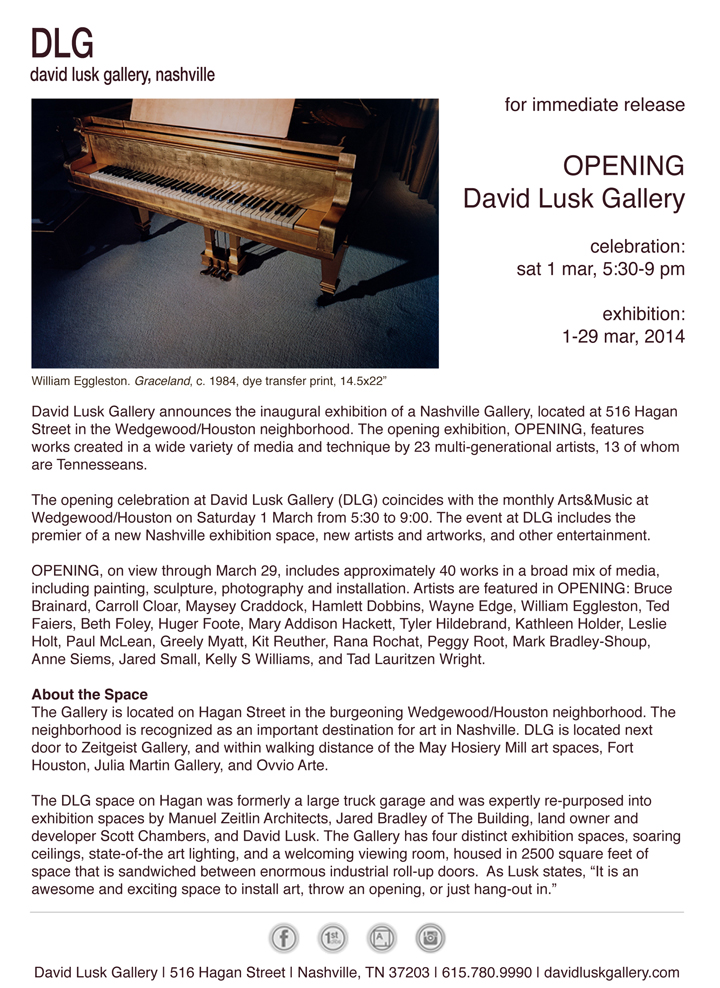
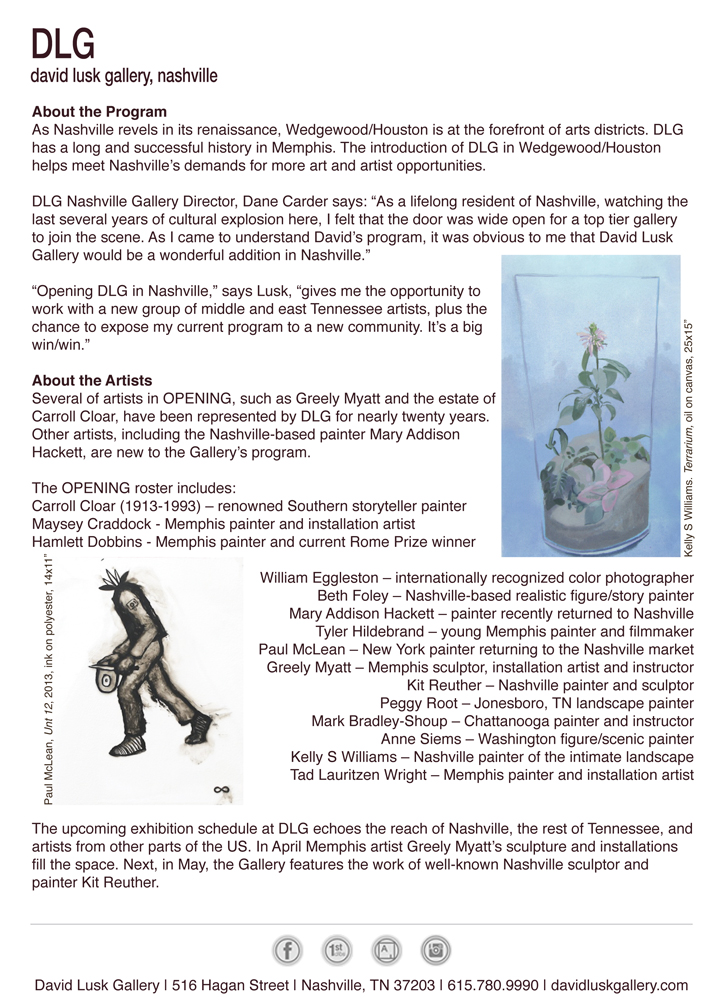
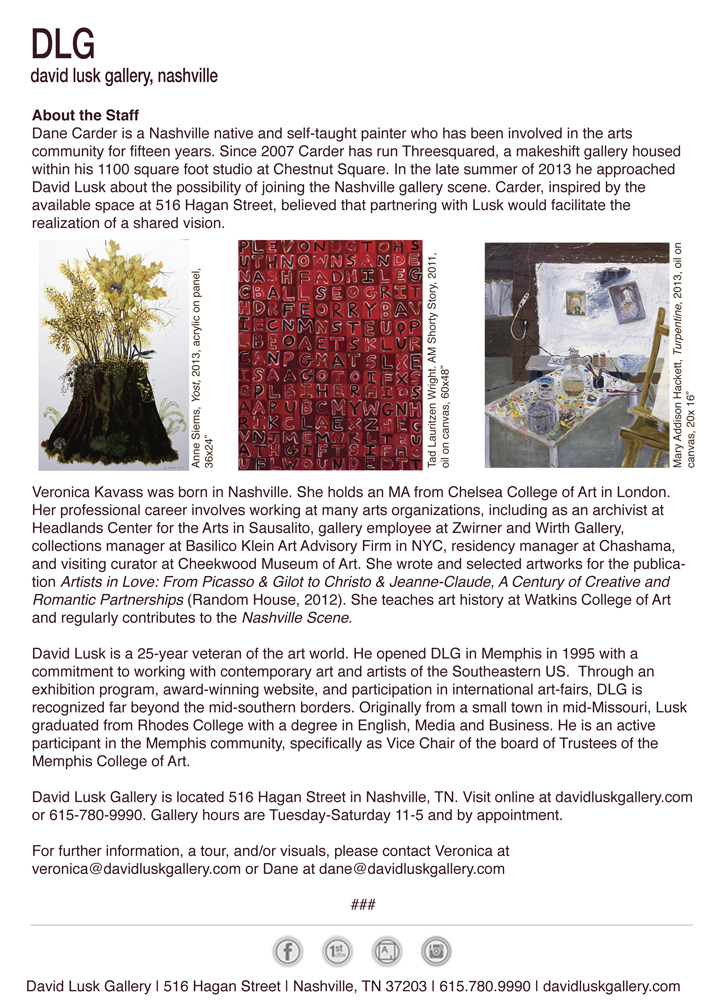



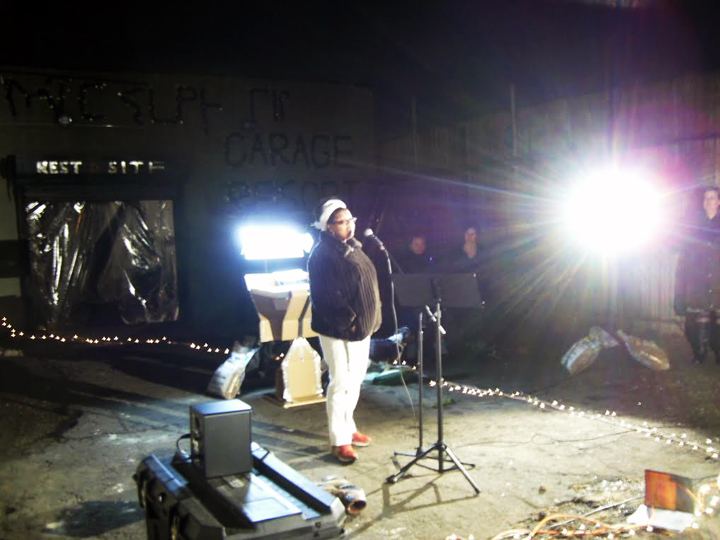
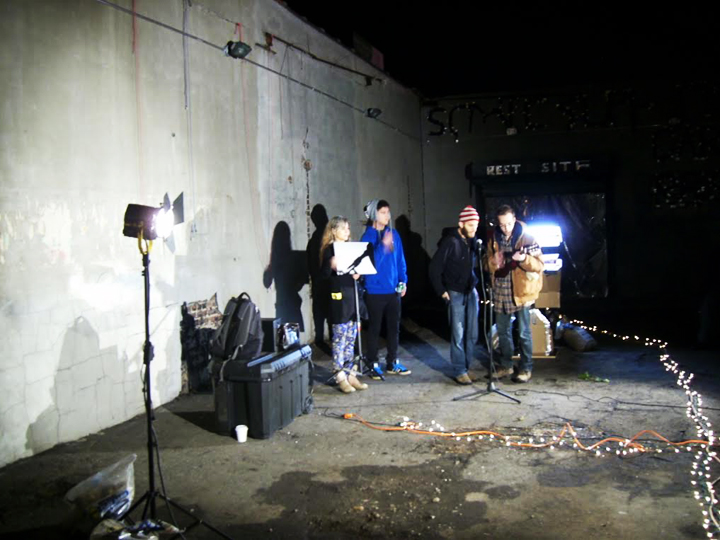
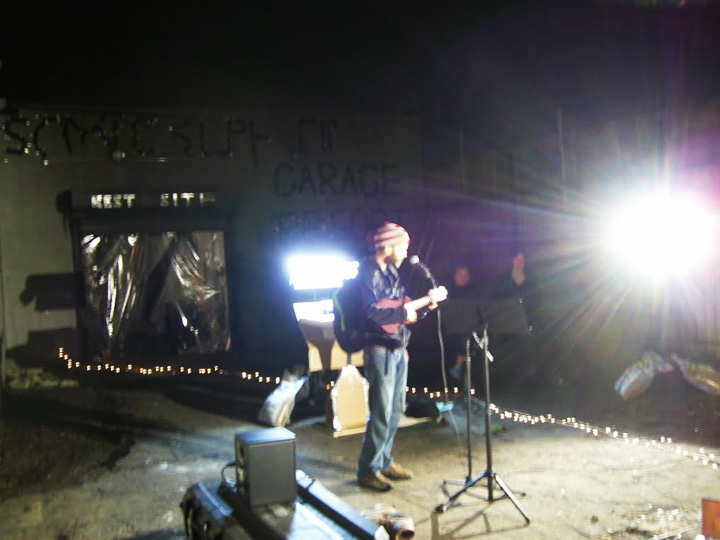


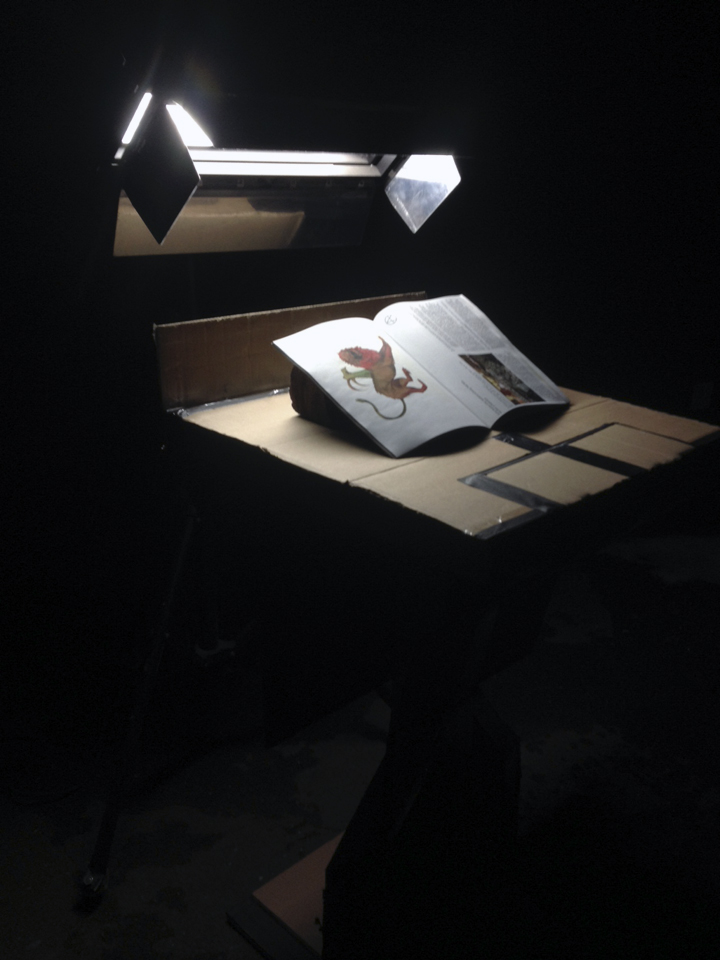
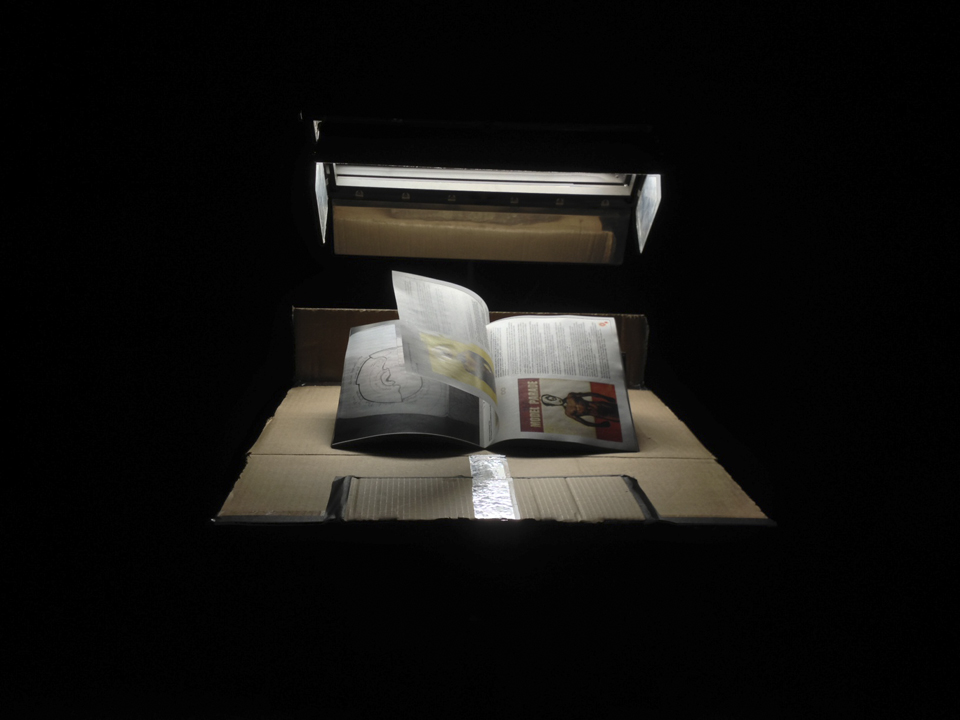
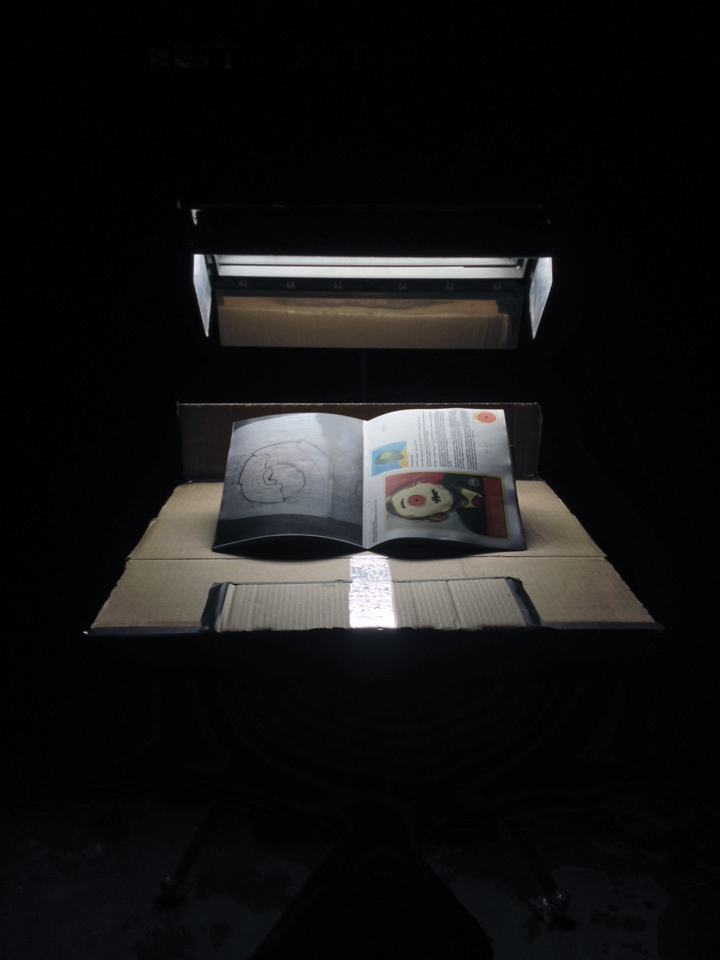



![Lloyd's smirk from the cited interview + a vampire squid. [PJM, 2013]](https://images.squarespace-cdn.com/content/v1/501abbd4c4aaab20160f16af/1383726266430-4DA4LANS9GXMJ44ZGJ1B/lb5-720.jpg)

